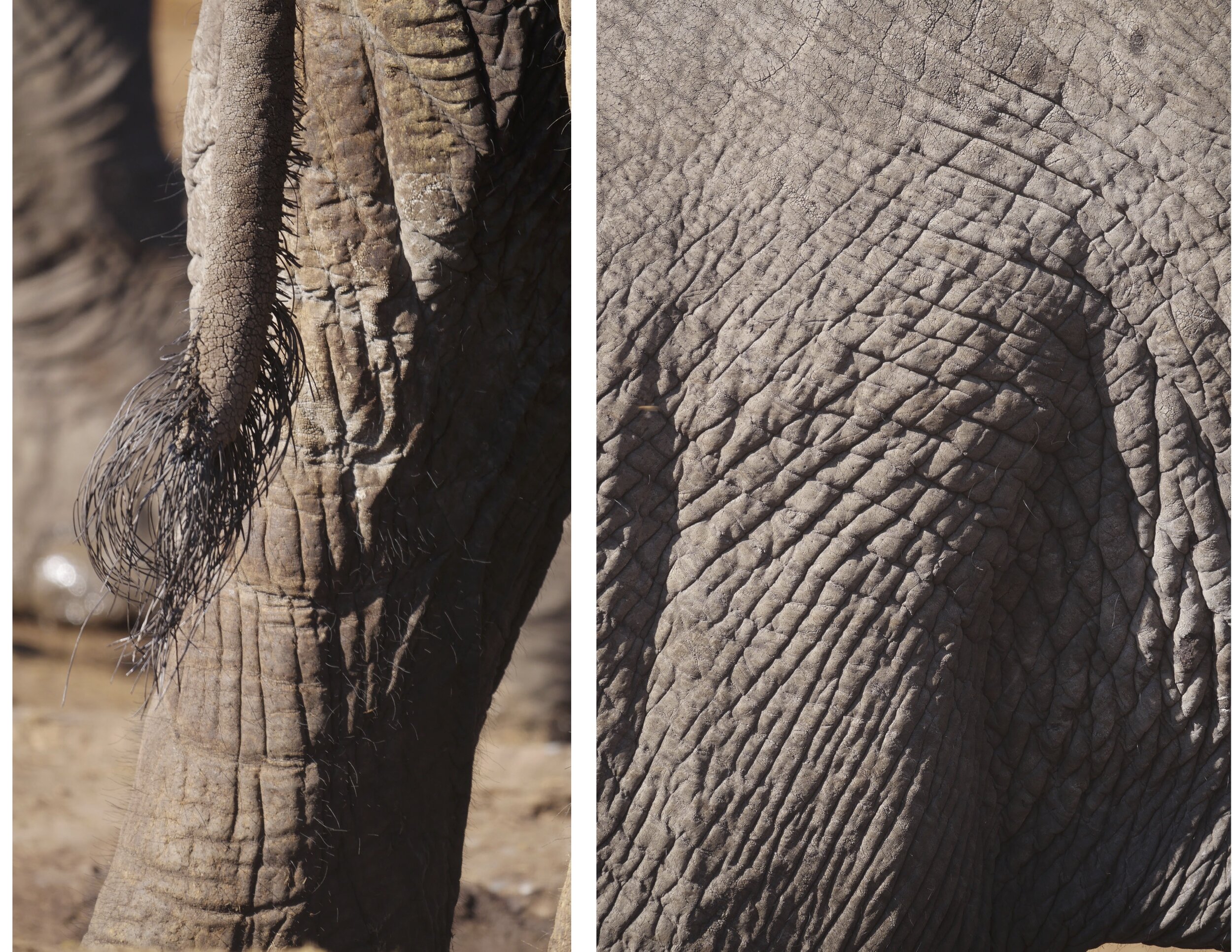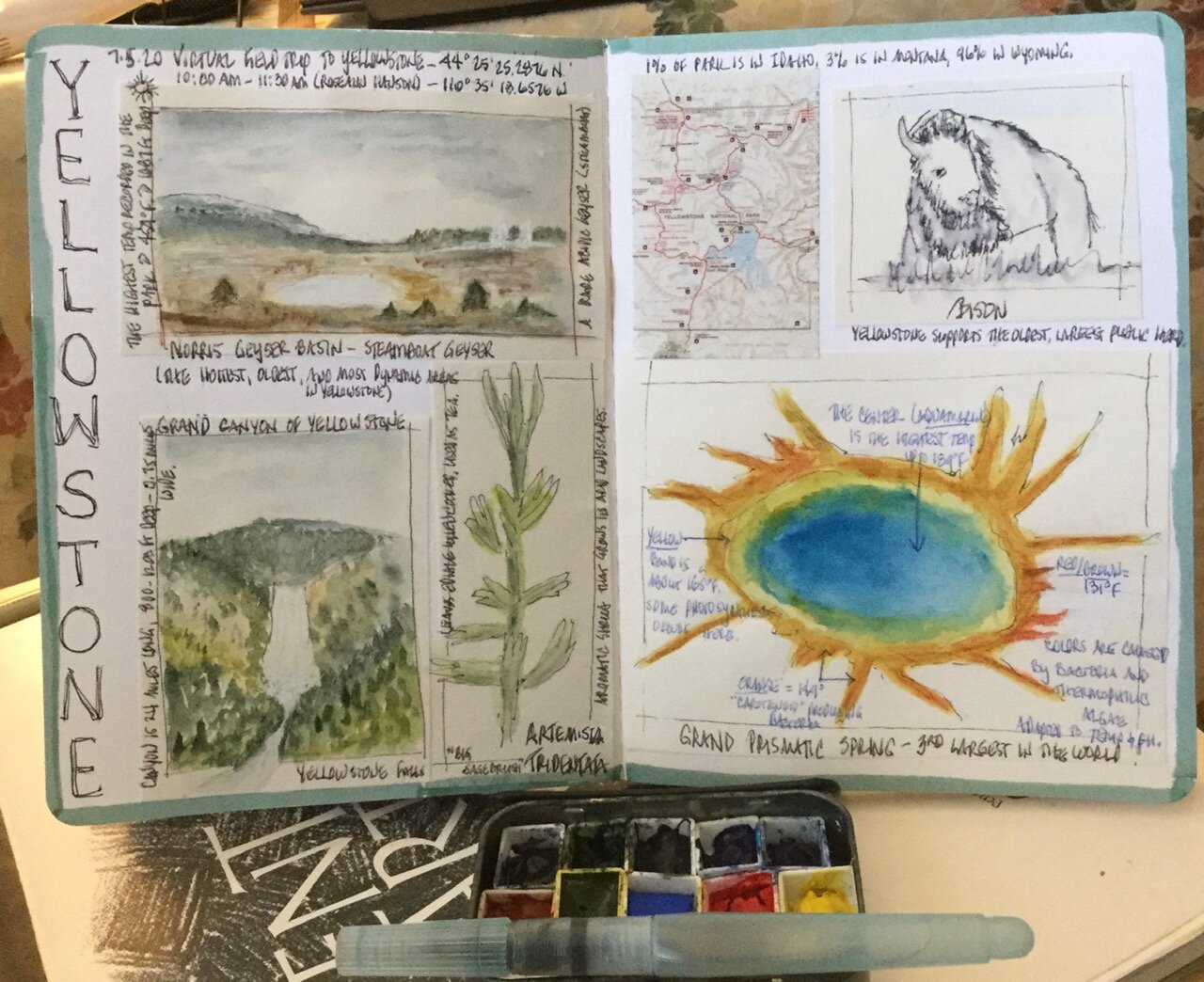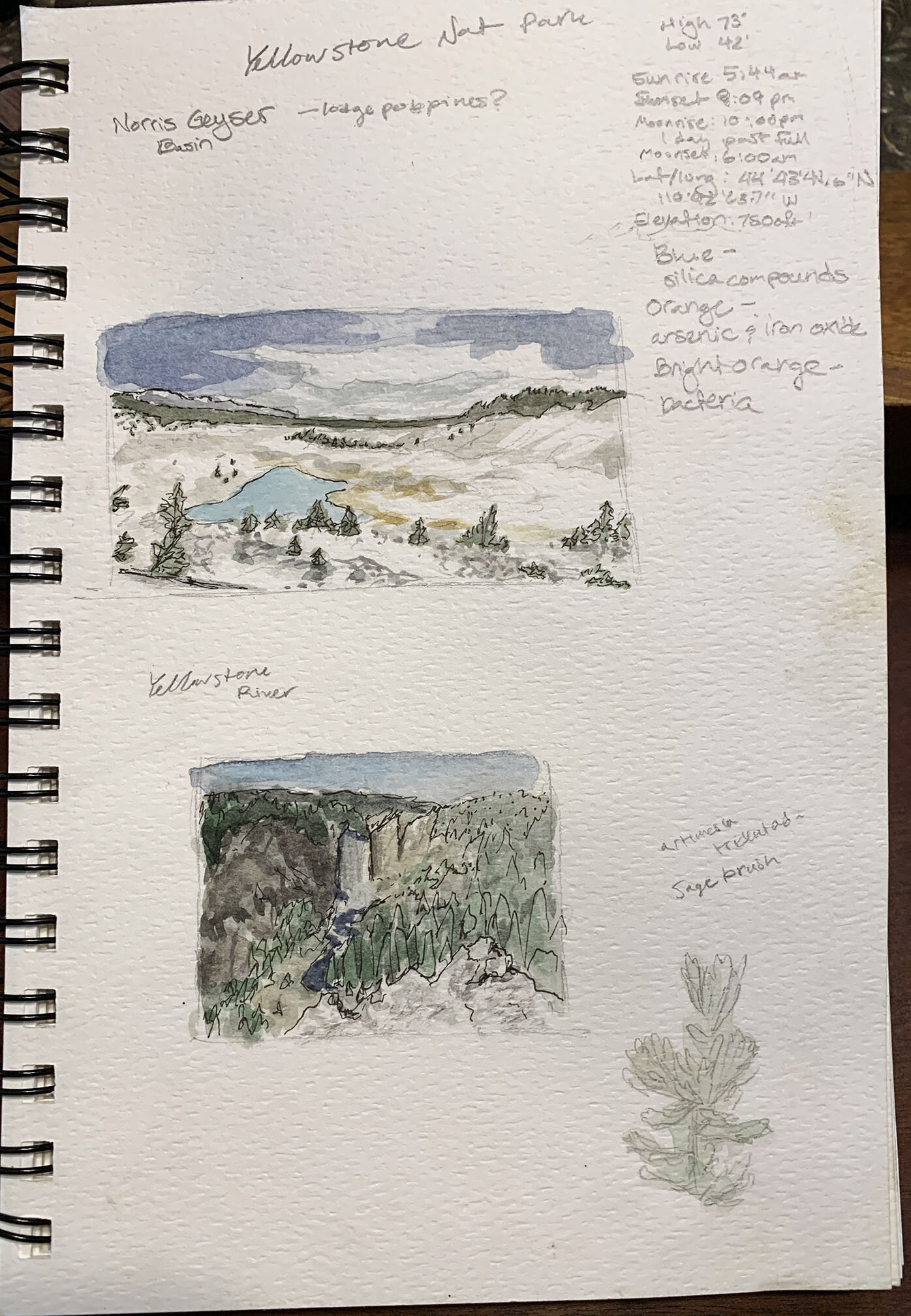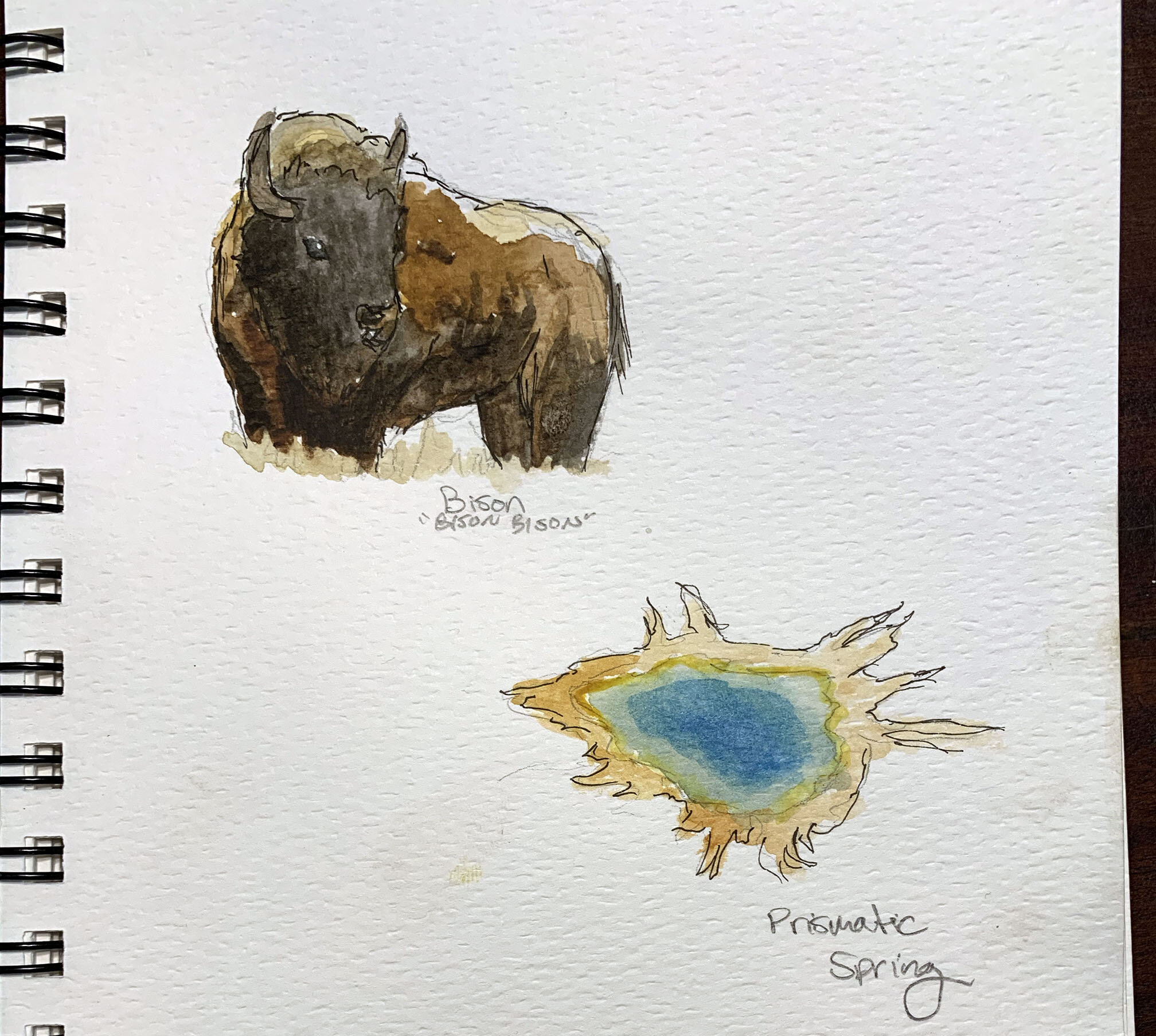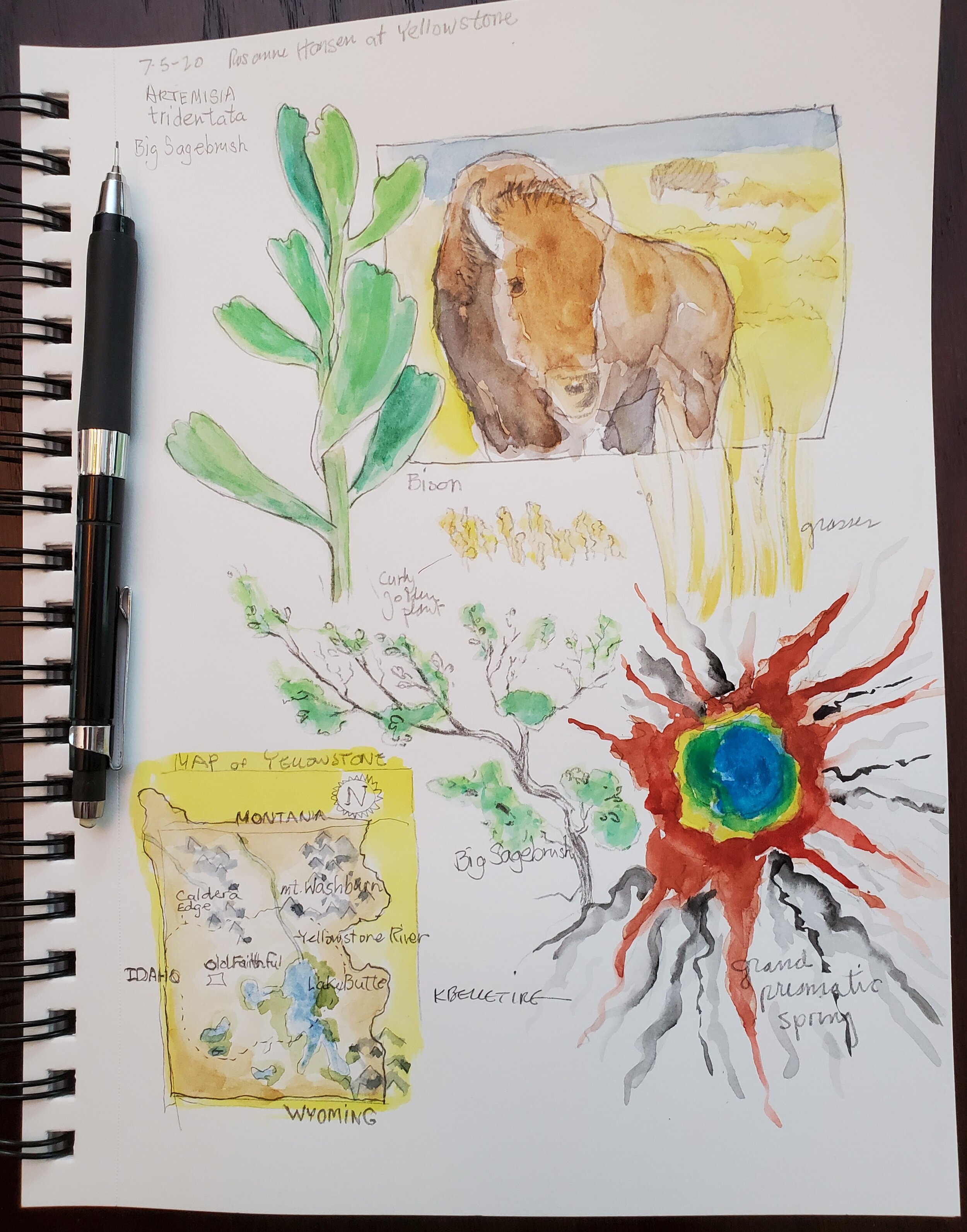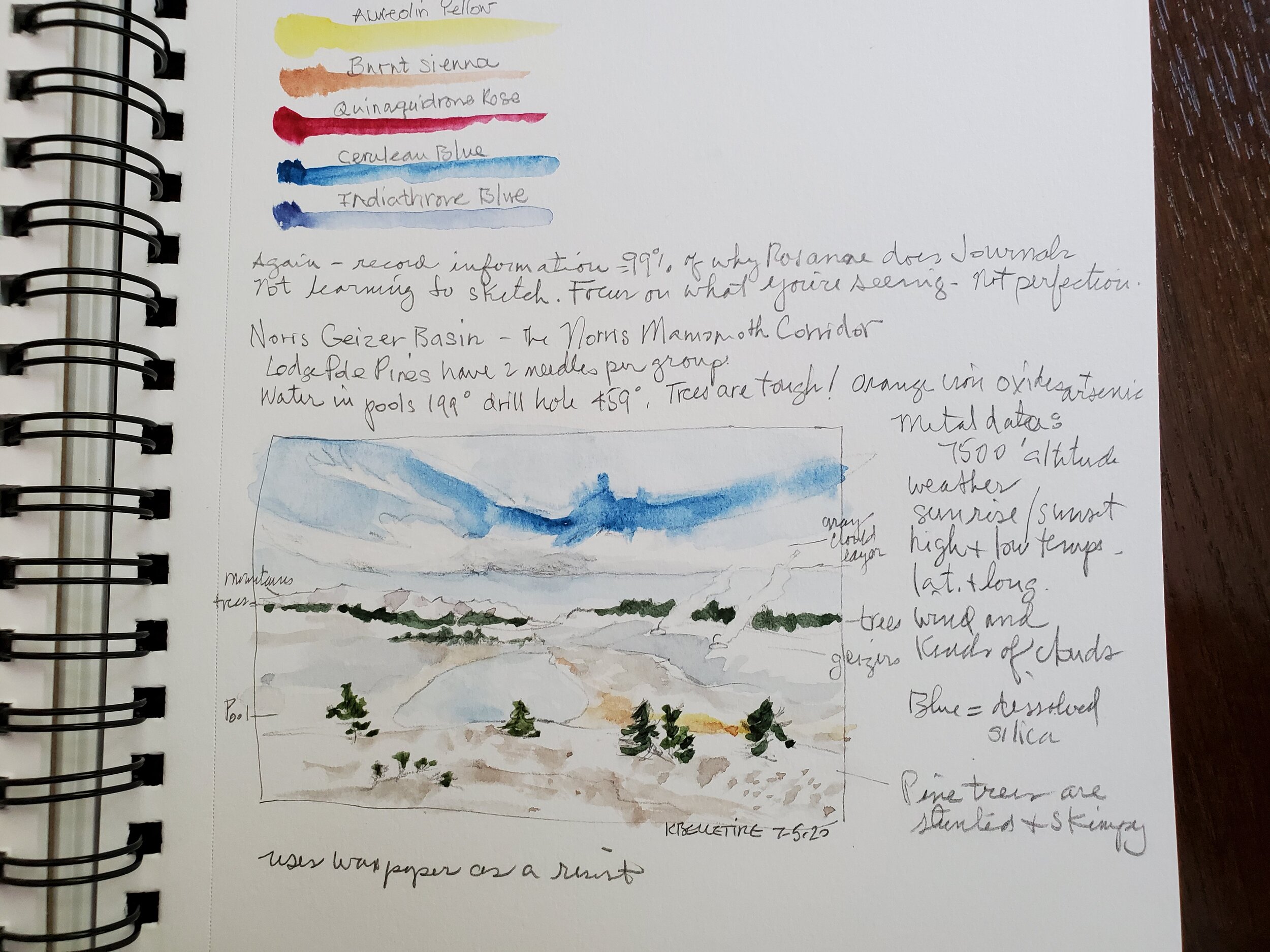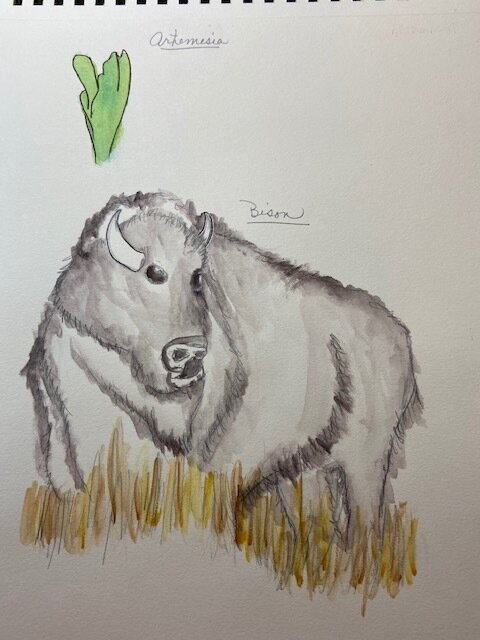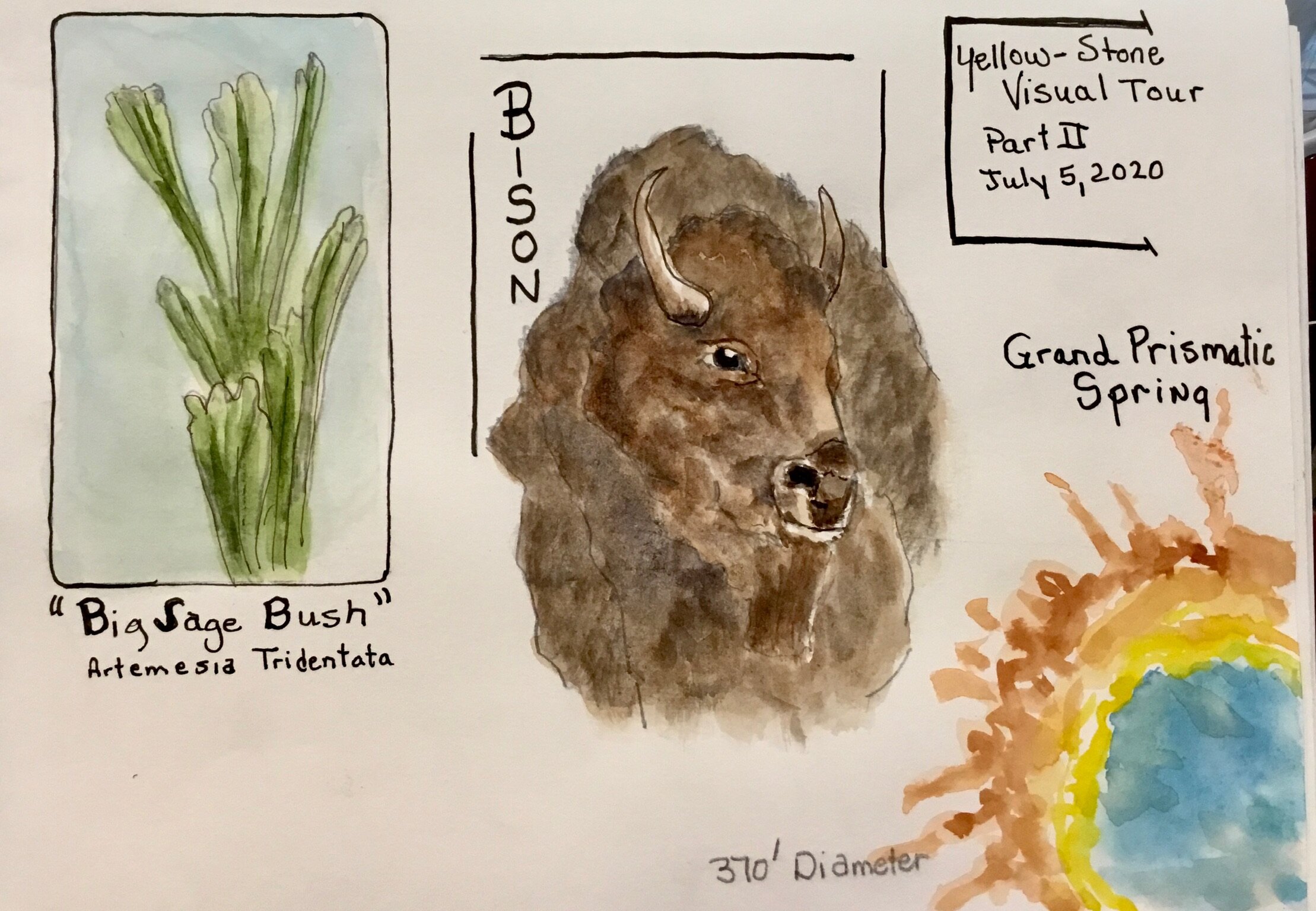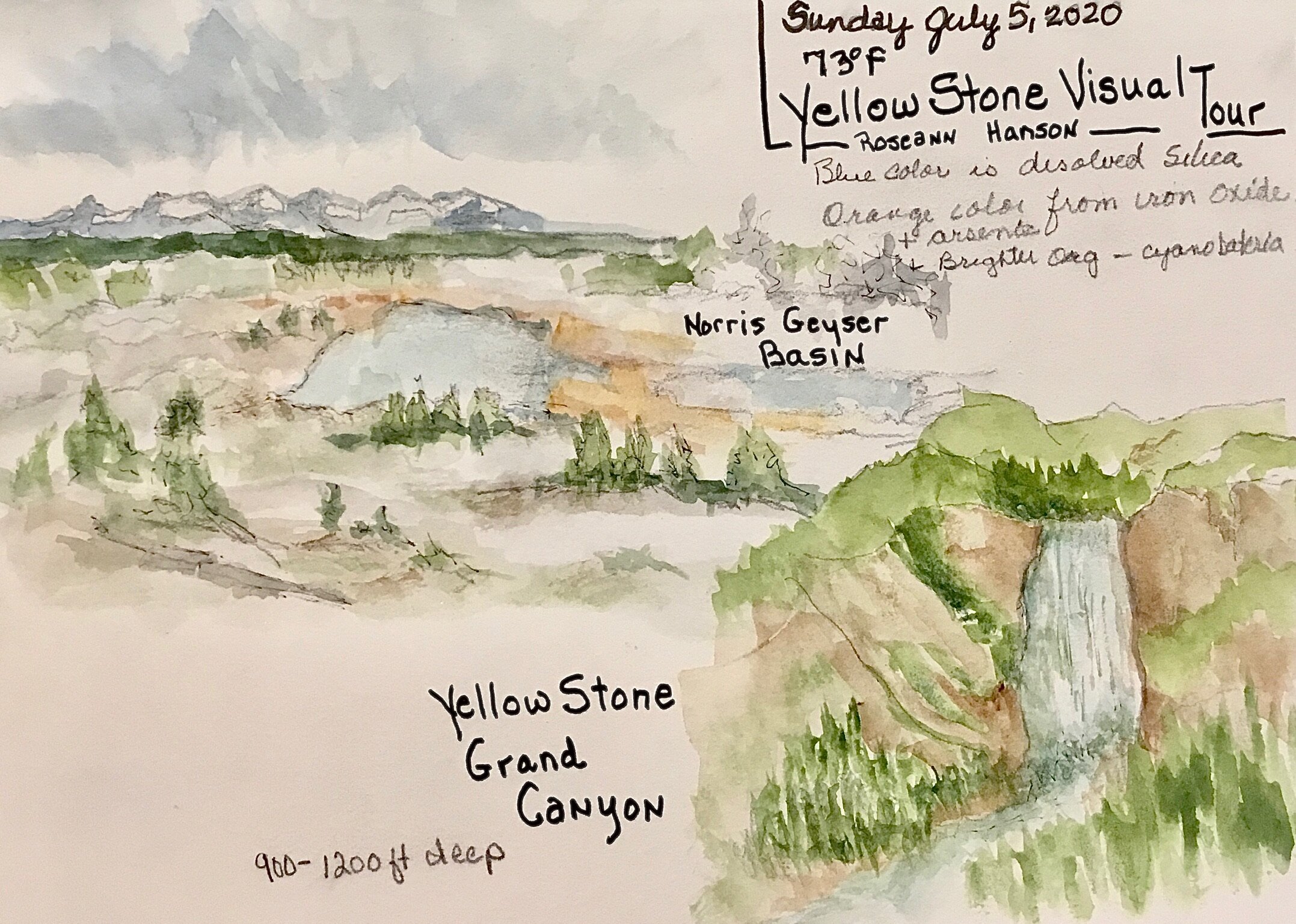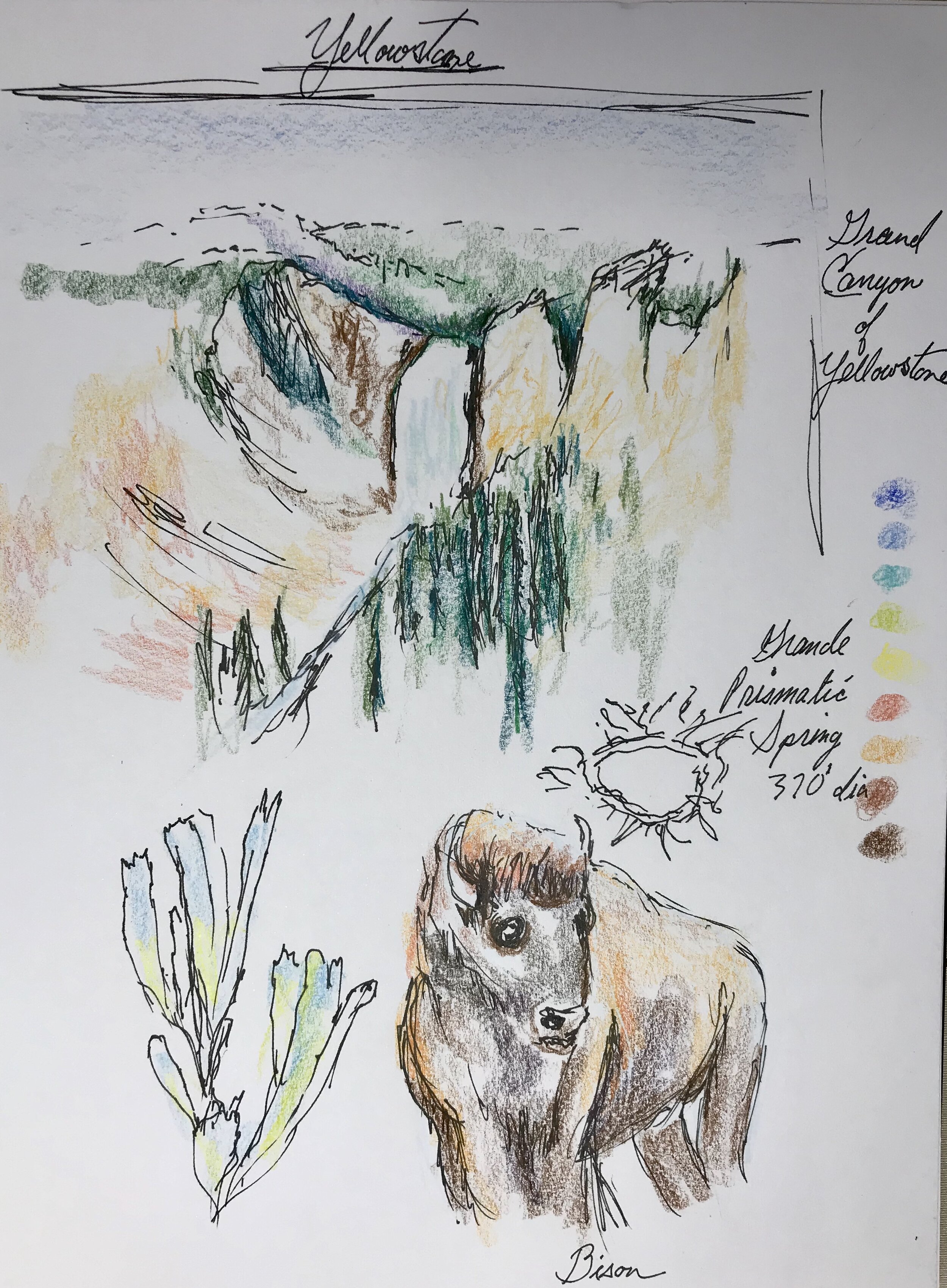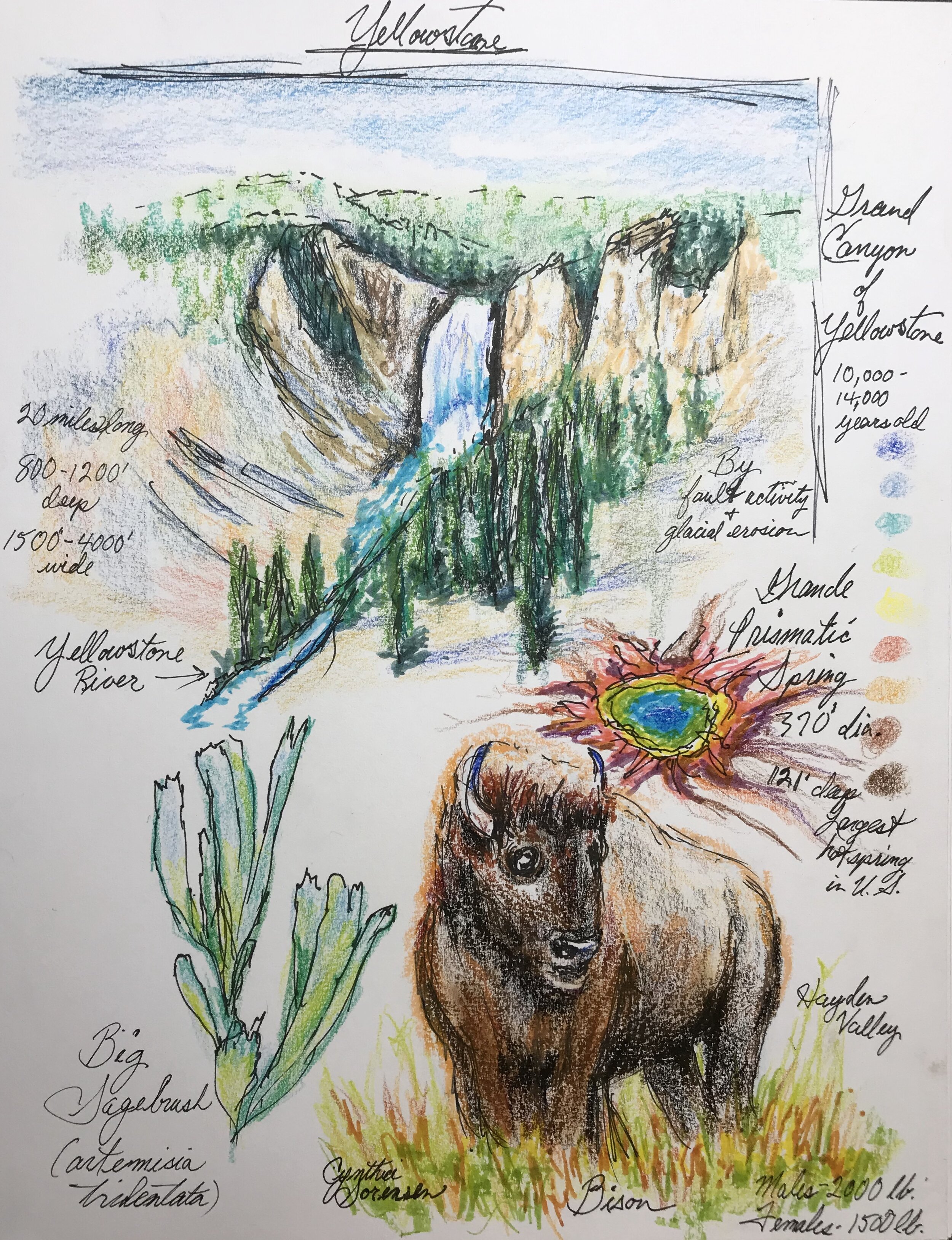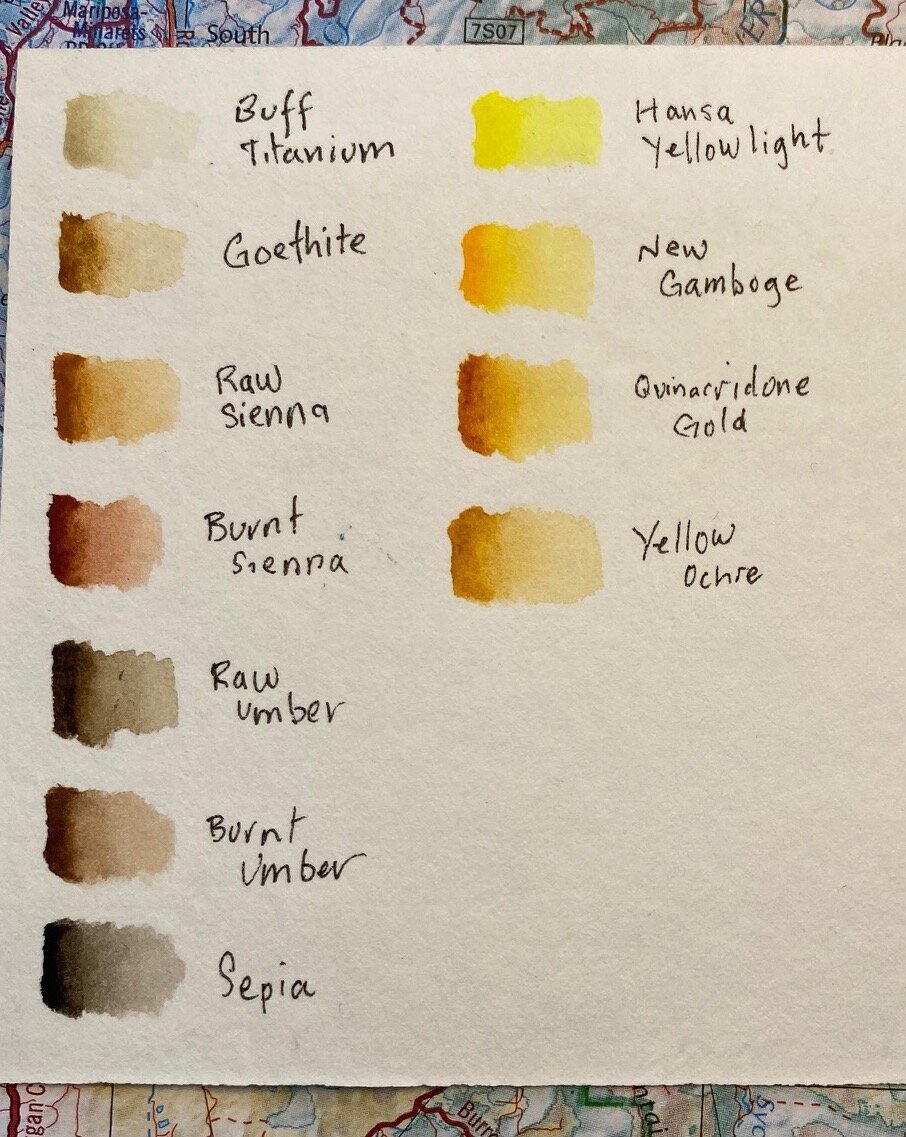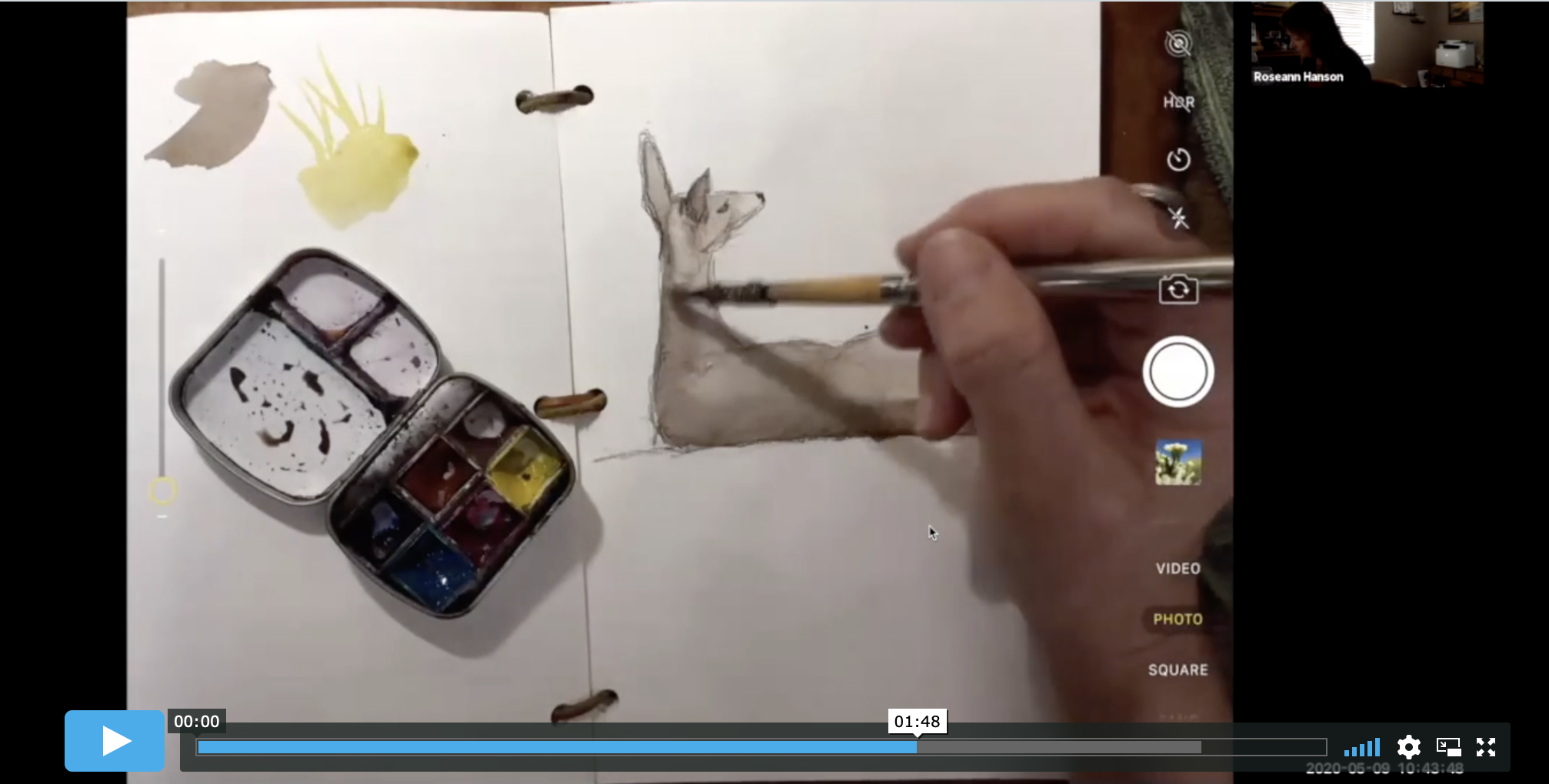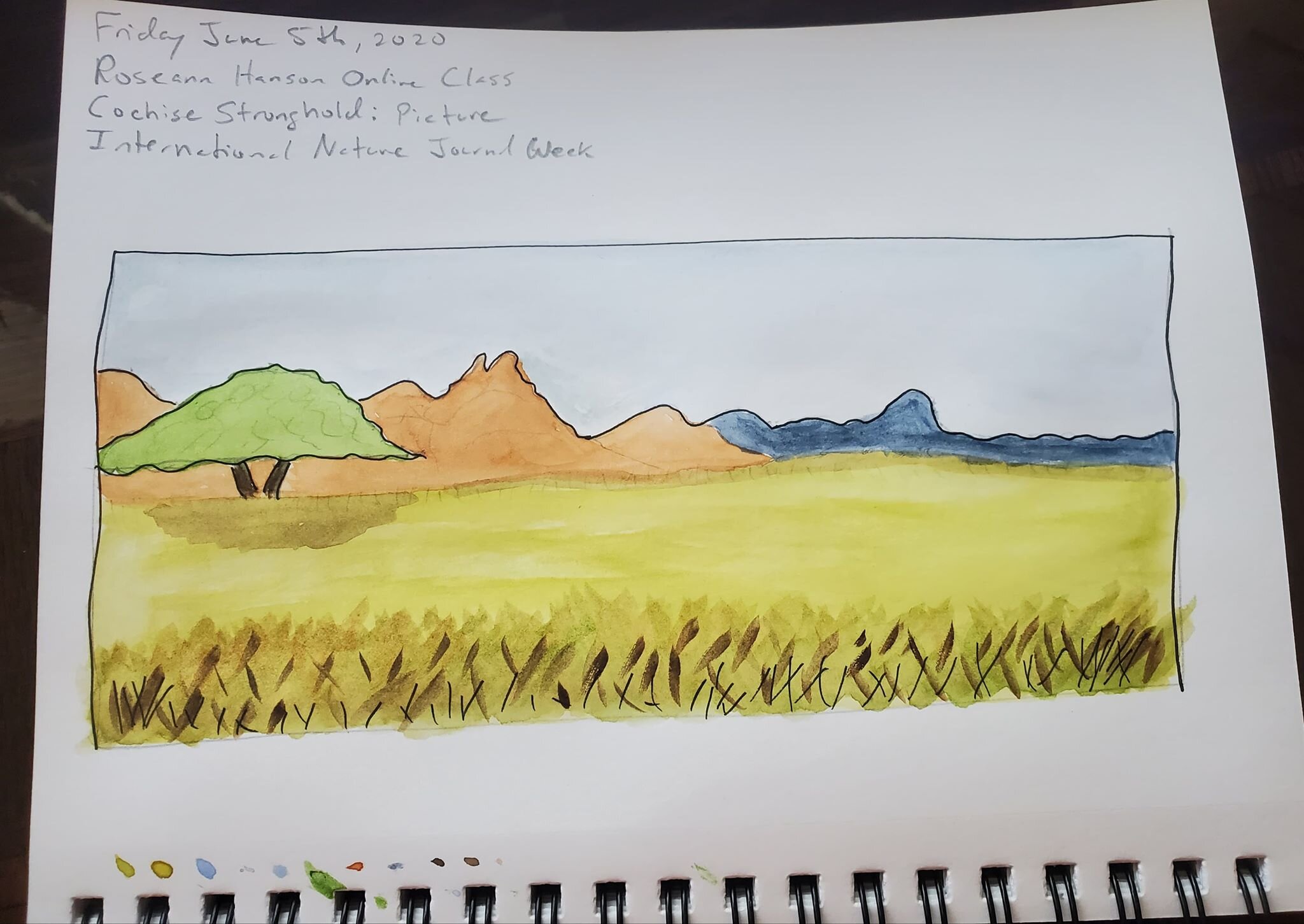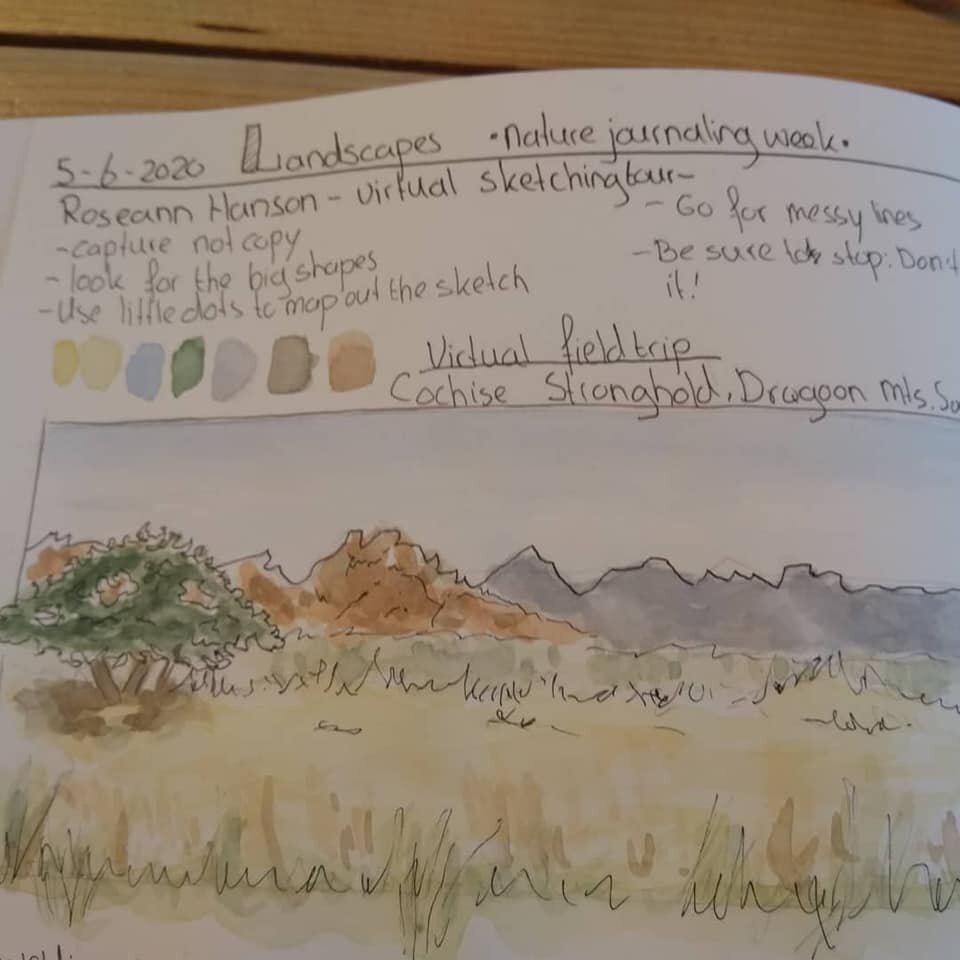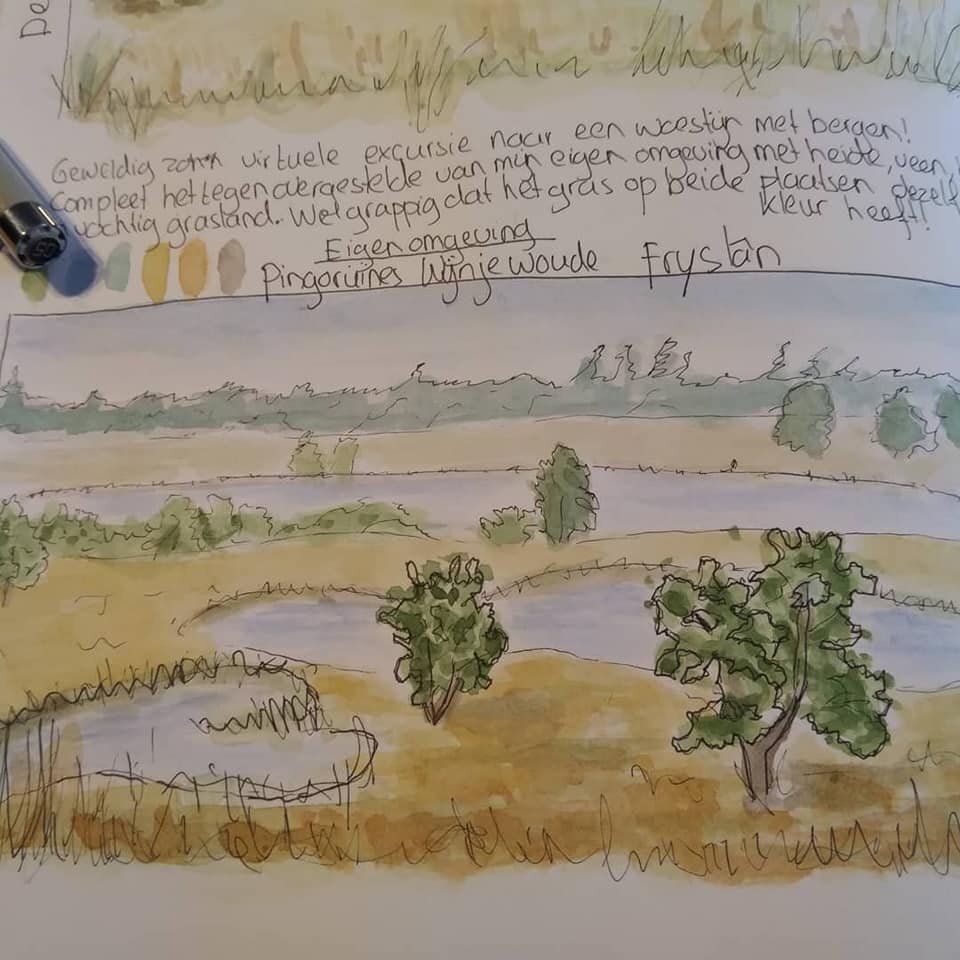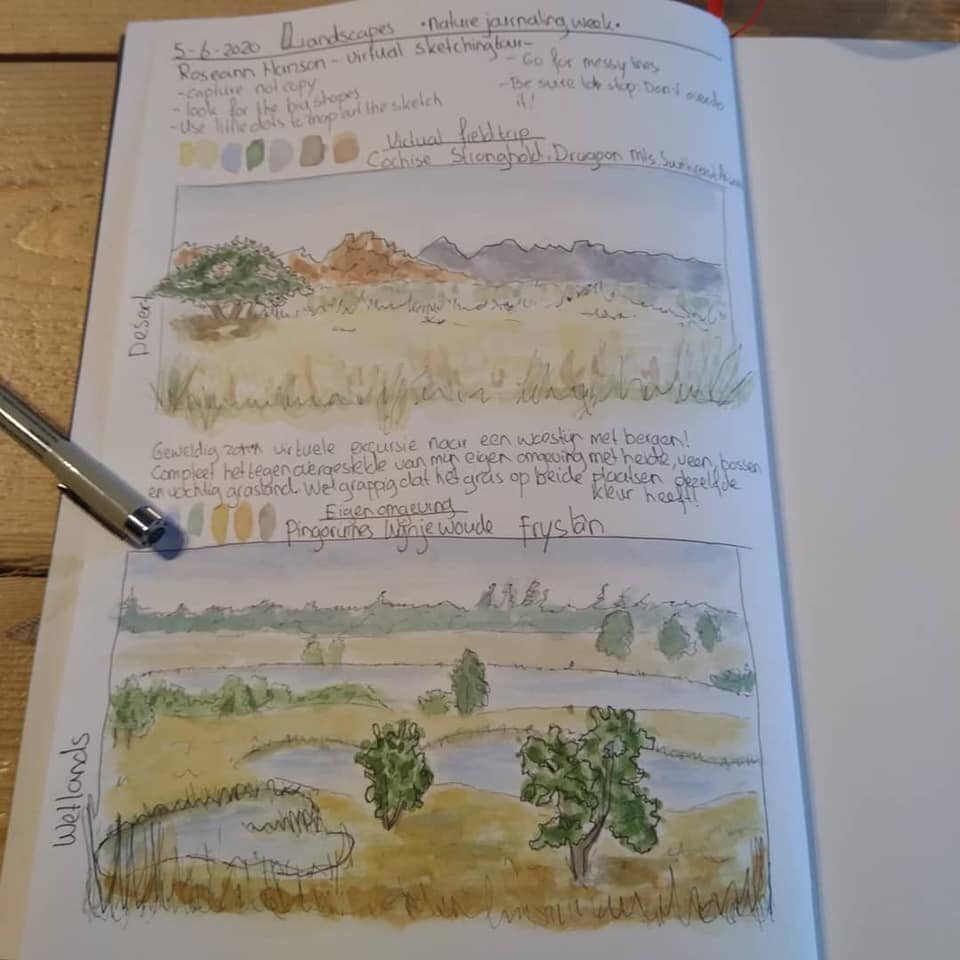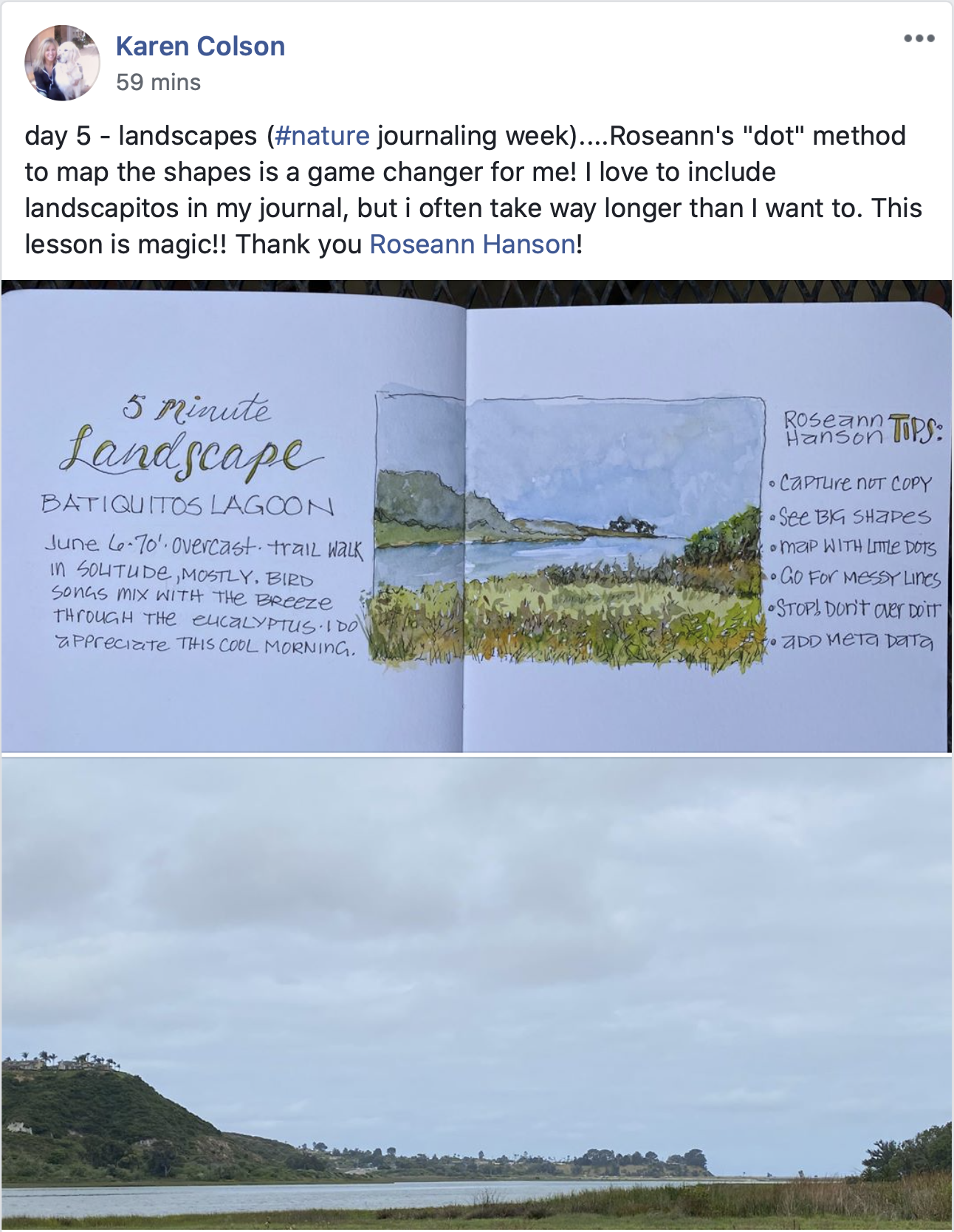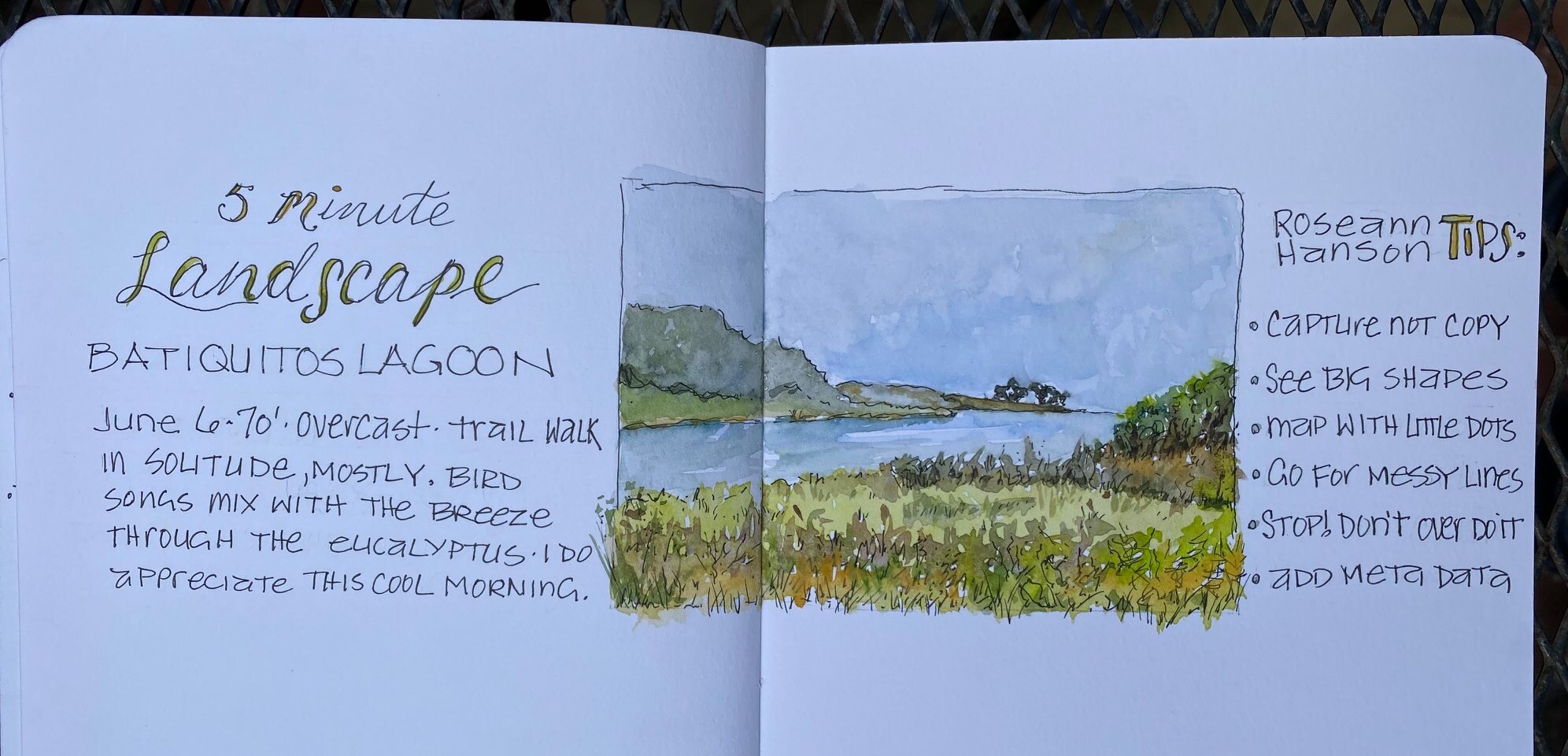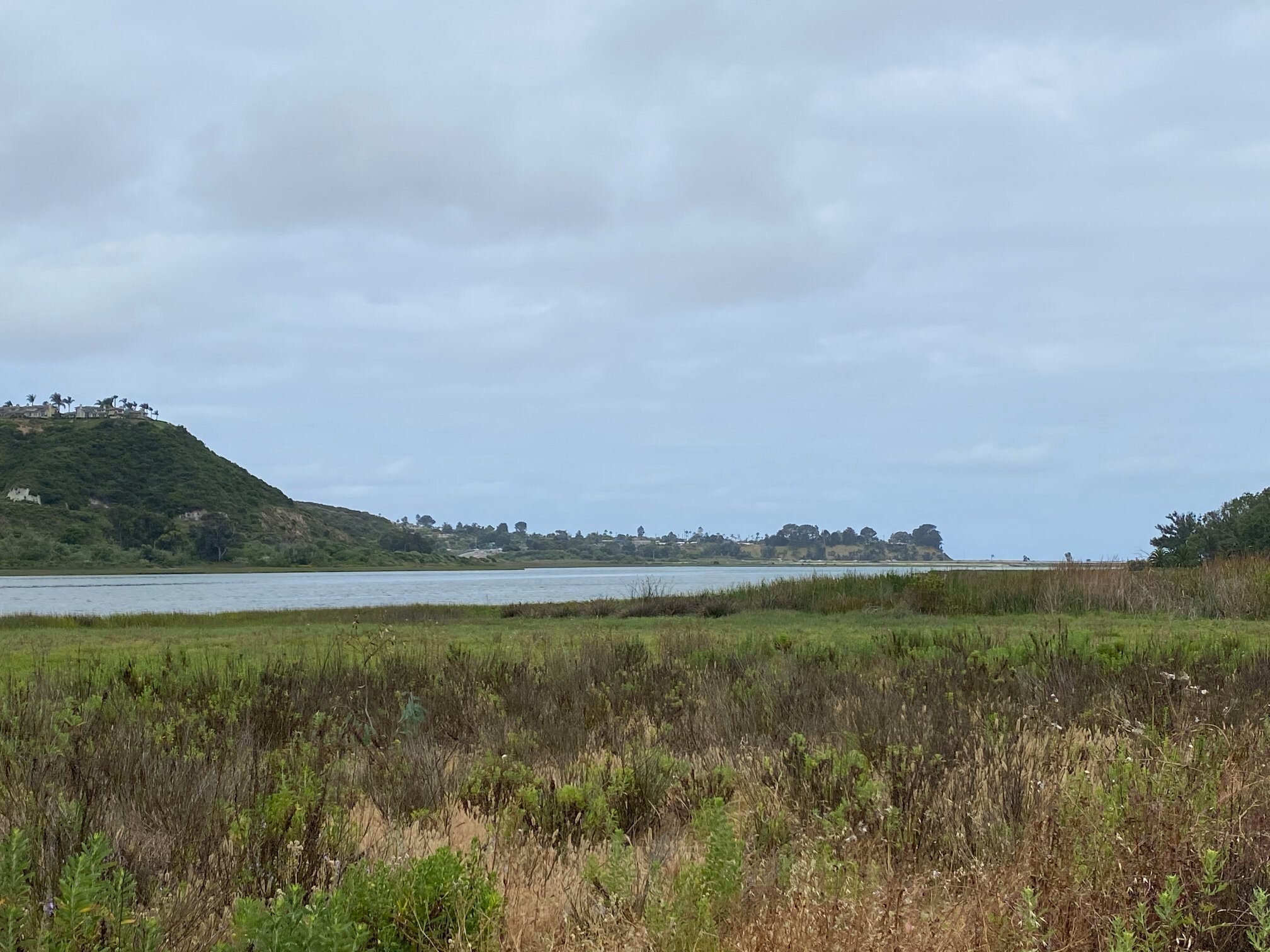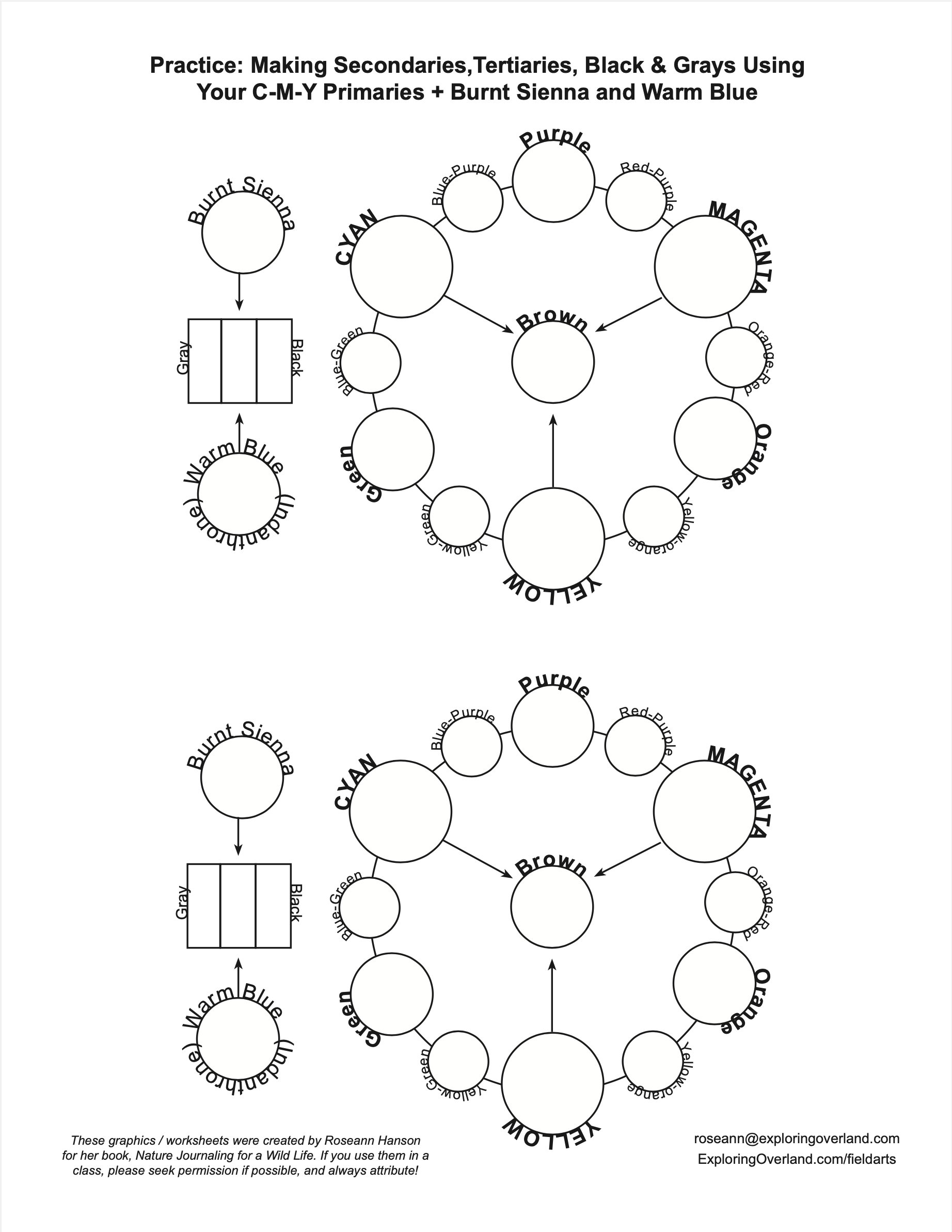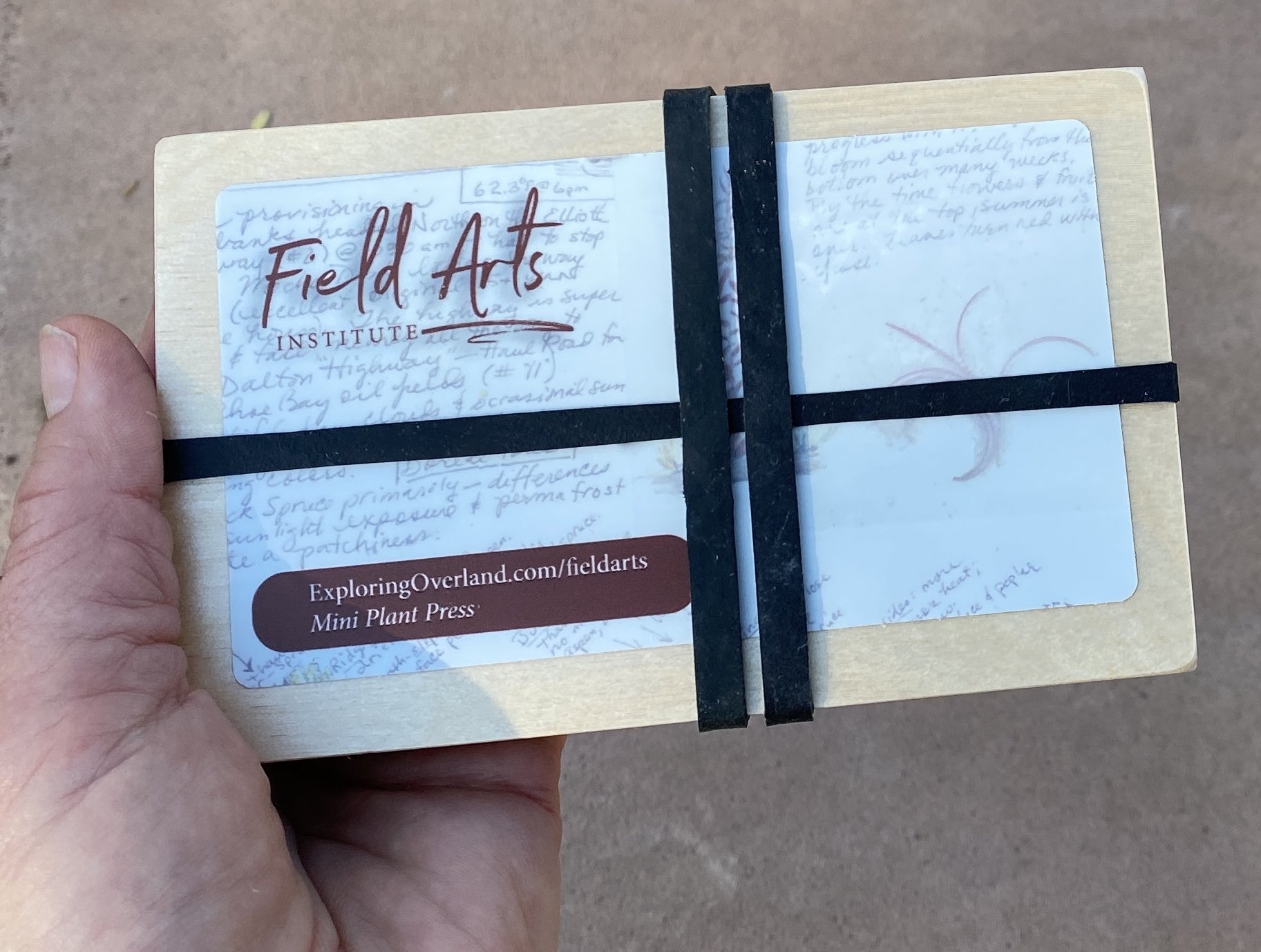Virtual Field Trip: Safari to Botswana
Join me as we head to Botswana for a special virtual safari!
We’ll explore, sketch, and take notes on elephants and their behavior, all virtually.
If you haven't started adding sketches to your field journals yet, don't worry—this session is going to focus on observational skills and recording data in the field. I might do a sketch or two, but definitely demonstrate survey counts and behavior tallies. Or just sit back and enjoy watching elephant antics. If you’re shy, don’t worry—we don’t require anyone to share their work and you can remain completely anonymous and worry-free!
RESOURCES FROM THIS VIRTUAL FIELD TRIP:
Practice identifying three basic age groups by learning to sketch them, thus learning their key features.
ON ELEPHANT BIOLOGY:
This article has a cool diagram of the bones of the foot (h/t Olivia C.):
http://elephant.elehost.com/About_Elephants/Anatomy/The_Feet/the_feet.html
PARTICIPANTS’ PAGES:
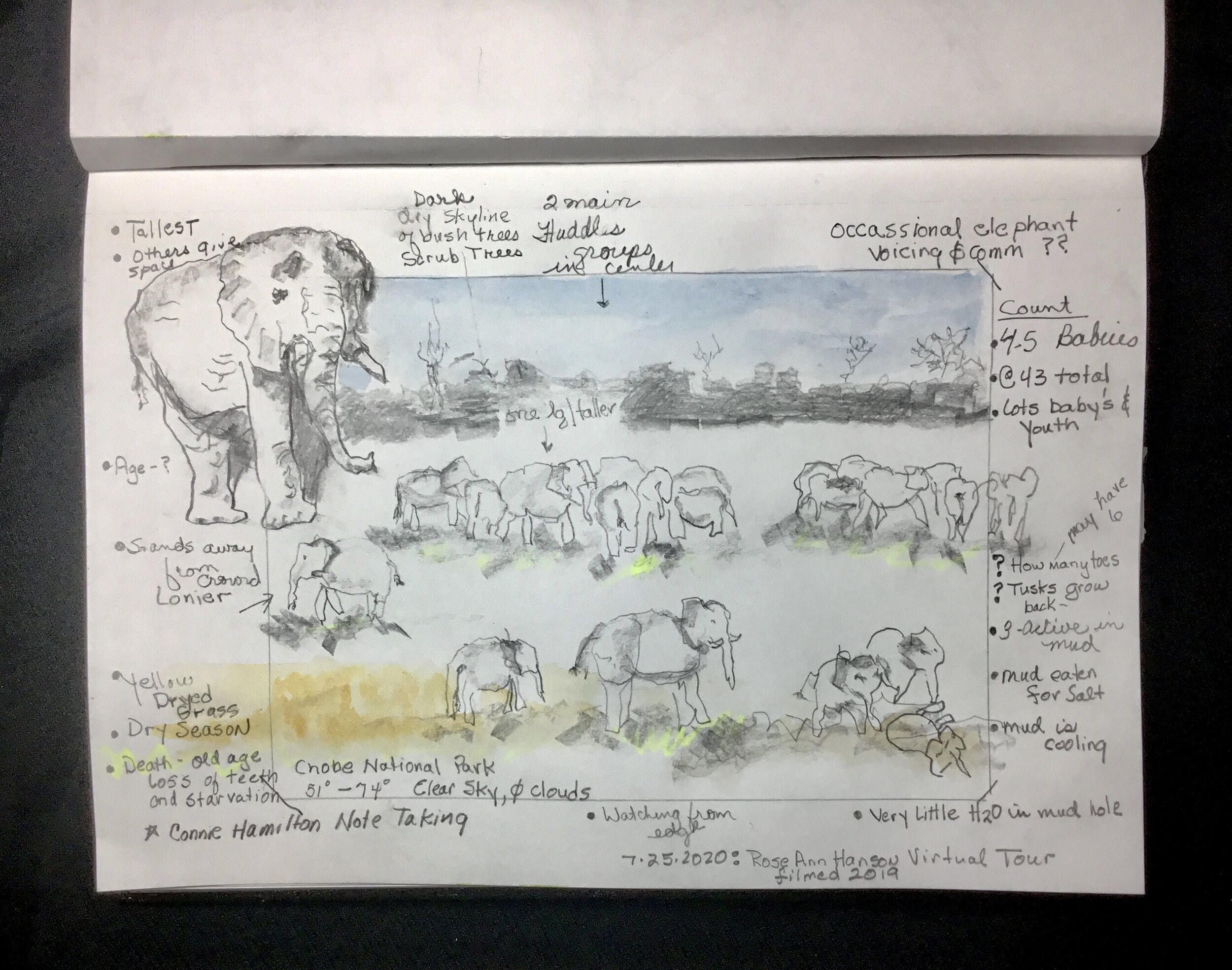
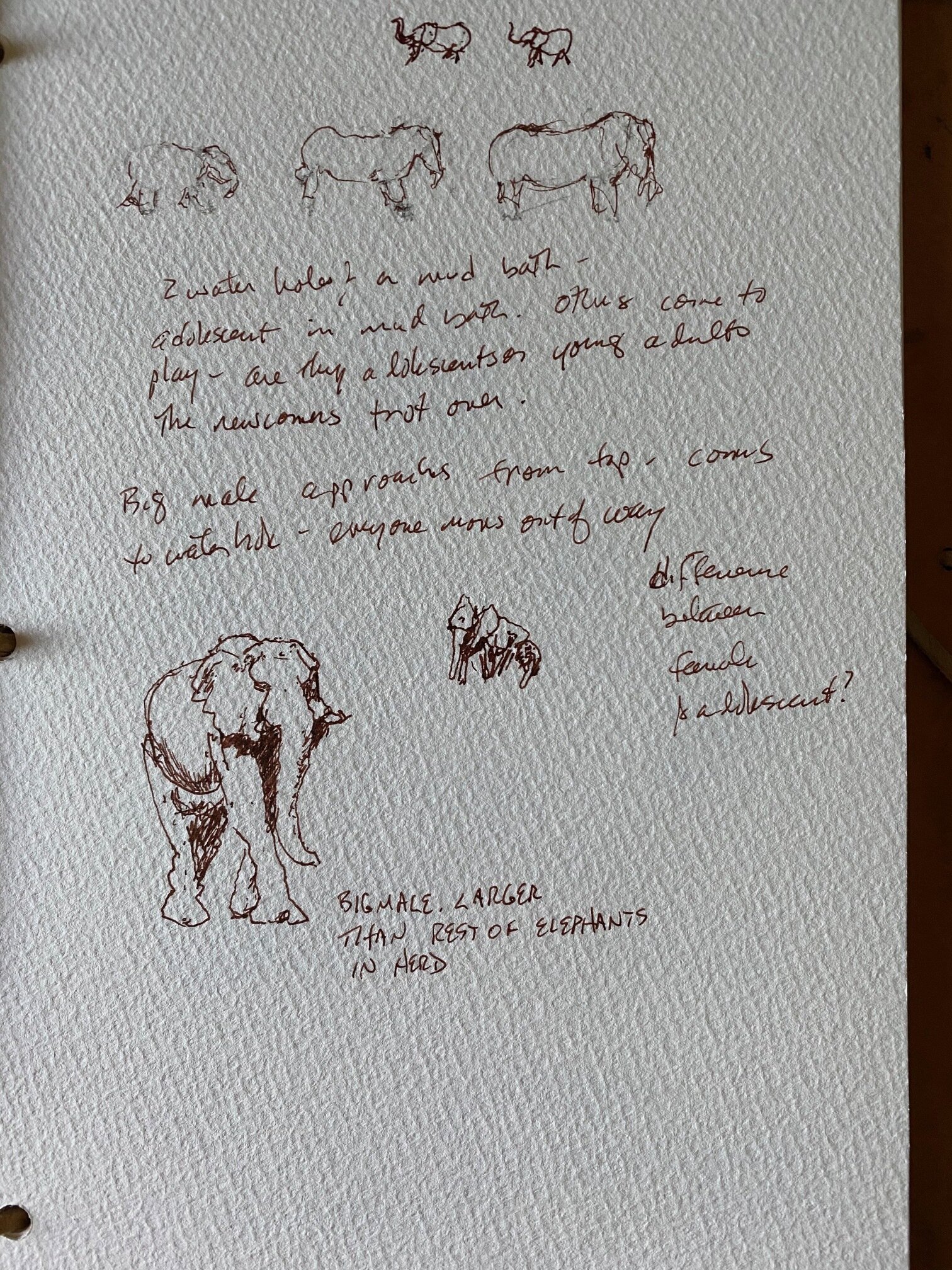
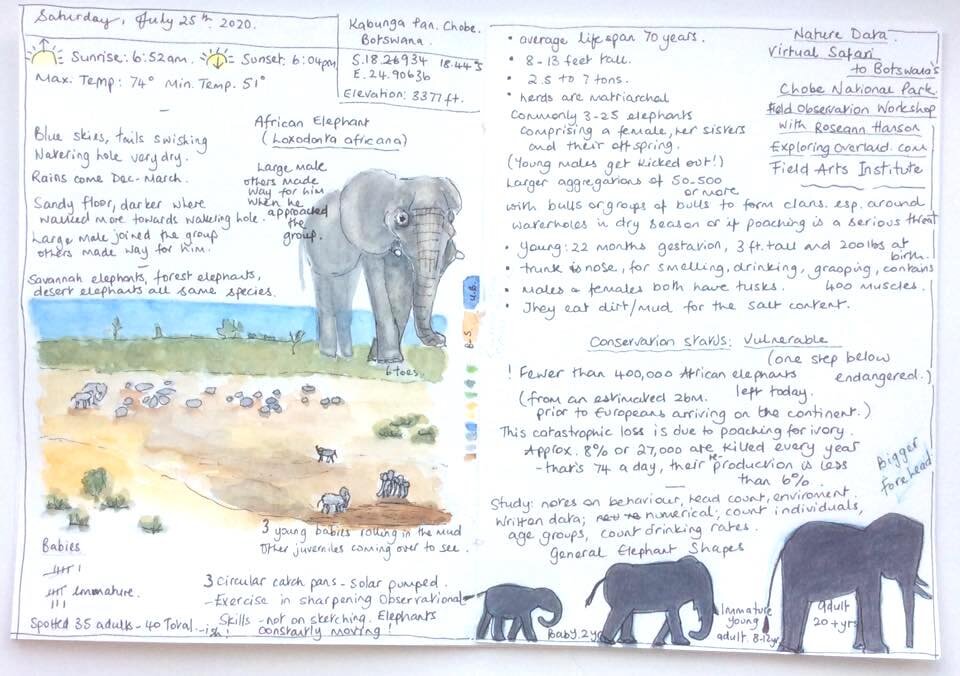
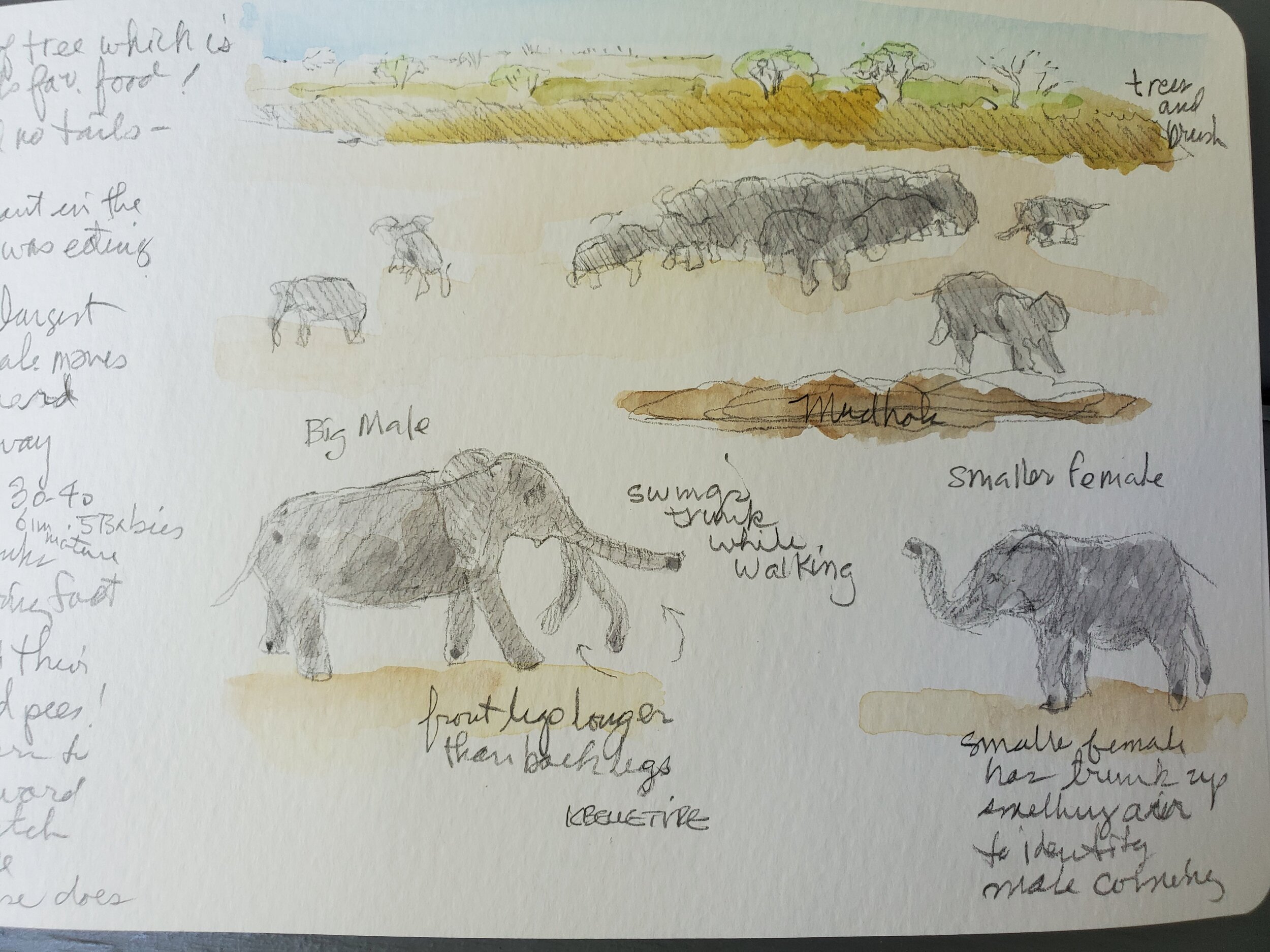
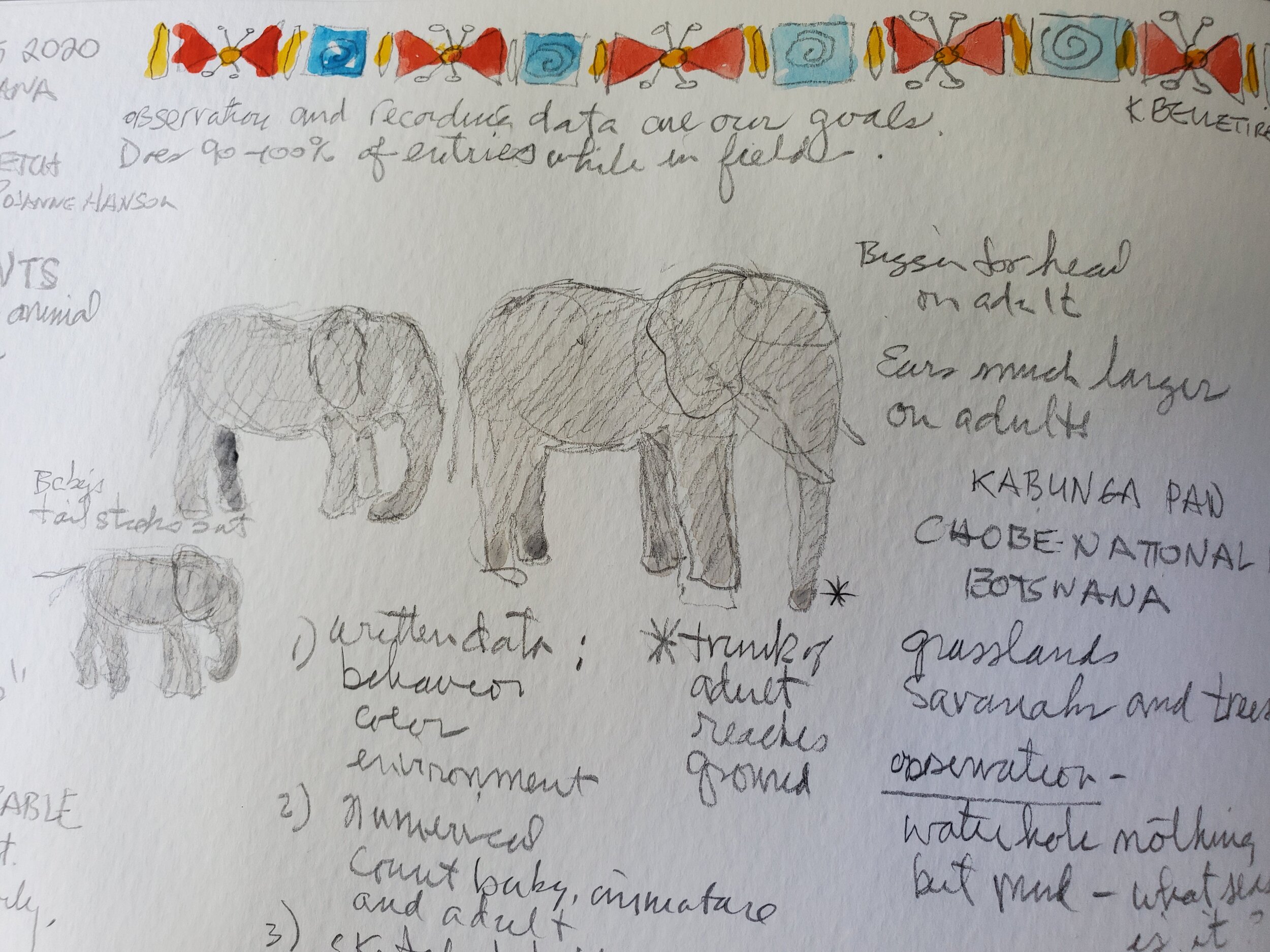
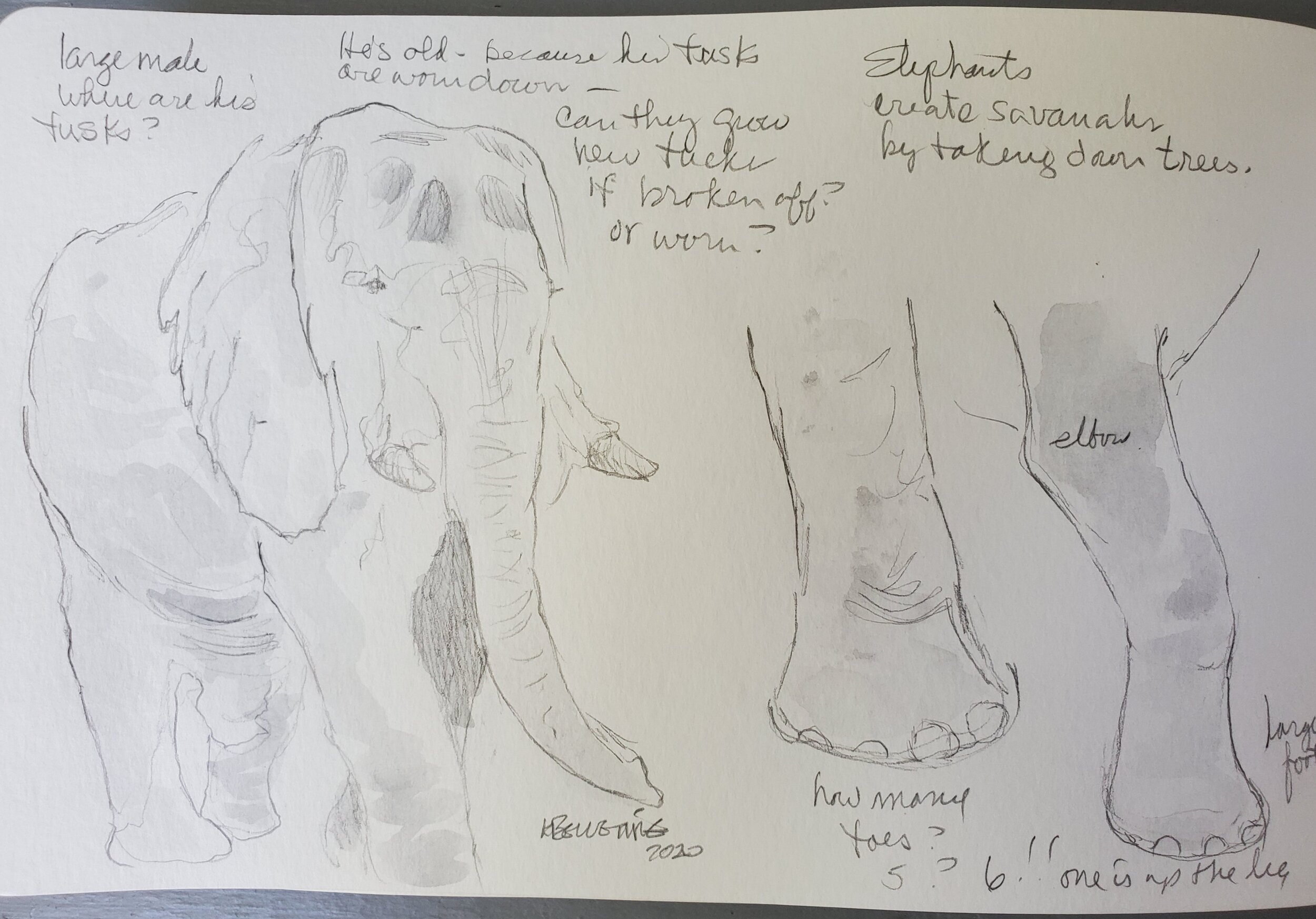
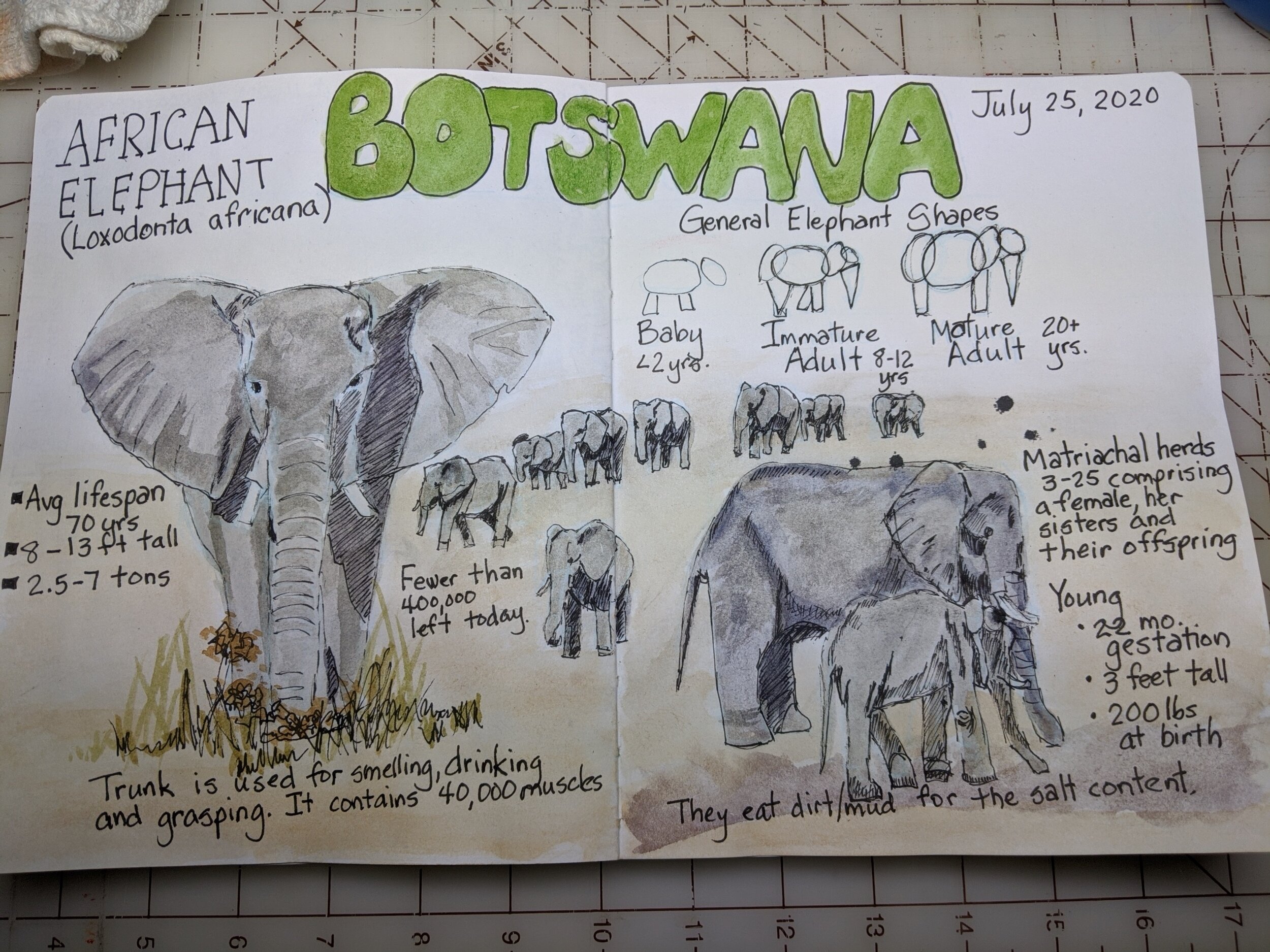
Virtual Field Trip: Yellowstone National Park
Join us as we head to Yellowstone National Park—without the crowds! We explore, sketch, and take notes on geyser basins, plants, wildlife, and the Grand Canyon of the Yellowstone, all virtually. Sketch along, or just watch, I explain how I pick what to sketch, where I put it on a page, and plan to leave room for nature data and notes.
Some tips and resources mentioned in the workshop:
Google Earth tour of Yellowstone: use this link here
PDF with metadata and nature data for each of the stops we made in the park. Download here.
Here are the images we used for sketching (all from the Google Earth tour, in the public domain; credit named where given):
Roseann’s finished pages:
Participants’ pages:
Don’t miss out! Get notifications of new tutorials, upcoming workshops, books, and more right to your in-box. We don’t over-do it, and we always respect your privacy. Promise!
#fieldarts #sketching #naturejournal #watercolor @swarovskioptik_nature #swarovskioptik_nature
Virtual Field Trip: Lake District National Park
[Scroll down for resources for the workshop.]
May 24, 2020 — Zoom workshop-demonstration on quickly sketching landscapes in the field, by Roseann Hanson (University of Arizona Desert Laboratory on Tumamoc Hill / ExploringOverland.com Field Arts Institute) and Ryan Petterson (Stanford University School of Earth Energy and Environmental Sciences).
Roseann and Ryan are both field scientists and naturalists, and keep field journals / nature journals with notes and sketches in pen, pencil, and watercolor.
In this workshop, we take you on a virtual field trip to the Lake District in England using a 360-degree-view website, and then each of us demonstrates how we zero in on a scene, and then do a live sketch and discussion of our thinking and drawing process and techniques, adding color at the end.
Plan to draw along, and we answer questions as we go.
[Please note: during Ryan's sessions a camera / Zoom malfunction created a less-than-ideal resolution, which we are trying to fix.]
----------------------------------------------------------
RESOURCES FOR THE WORKSHOP:
Explore the region we’ll be visiting on our virtual field trip, Mosedale, Wasdale Head, Ritson’s Force, Lake District, NW England:
VRGlaciers, University of Worcester website
Click on the orange “TAKE ME THERE” to go to the 360-degree view; we’ll be at site #4 and later, #3 and #6.
To see Wasdale Head region on Google Maps, click here.
If you would like to sketch and paint along with me and Ryan, have your field notebook / nature journal handy, and a waterproof pen (if doing watercolor, too) or pencil.
John Muir Laws on sketching “landscapitos”— here, and peruse Instagram for great quick-sketches hash tagged #landscapito here.
Screen shots for our sketching demos:
Instructor and participant sketches from the workshop:
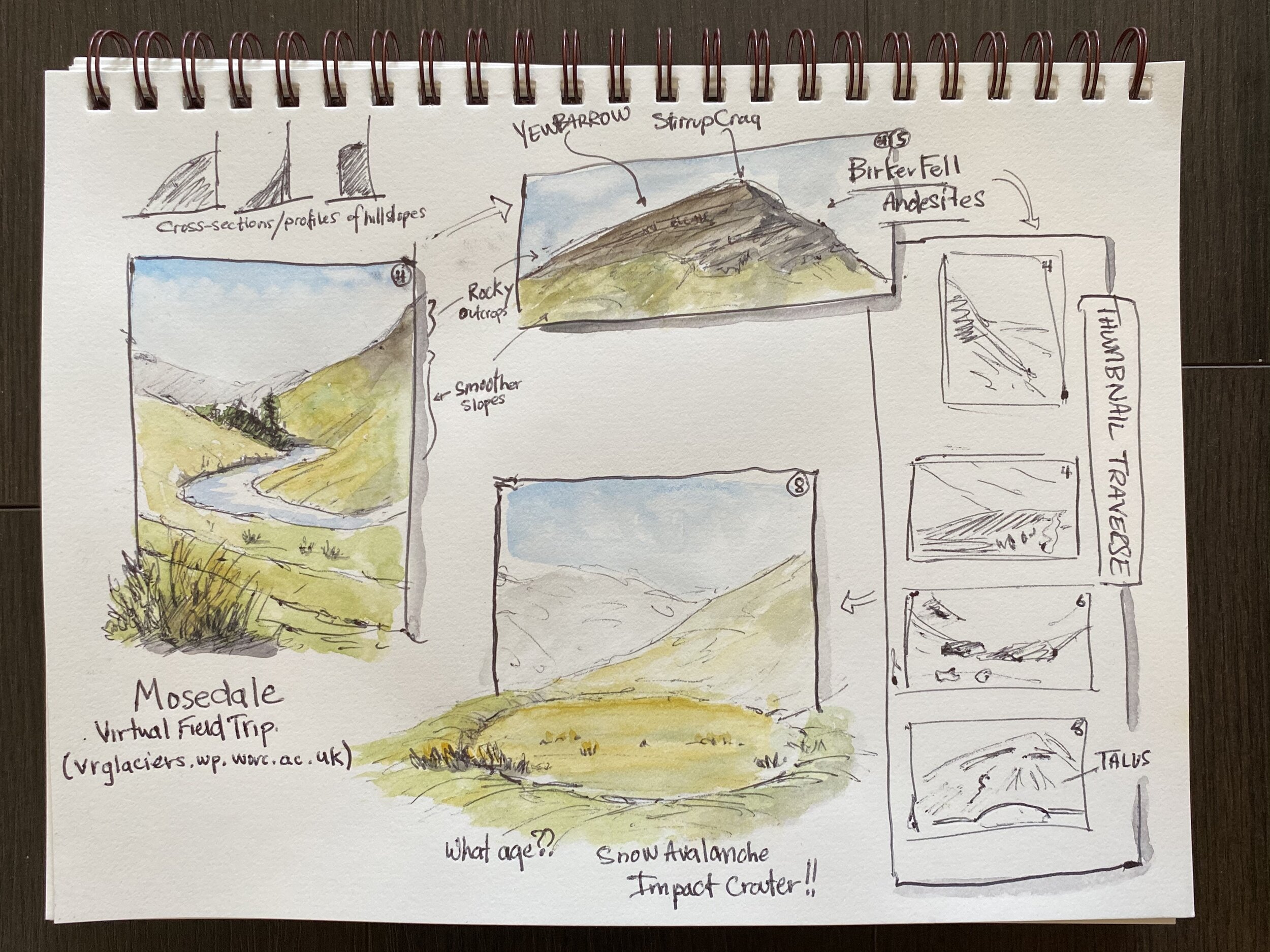
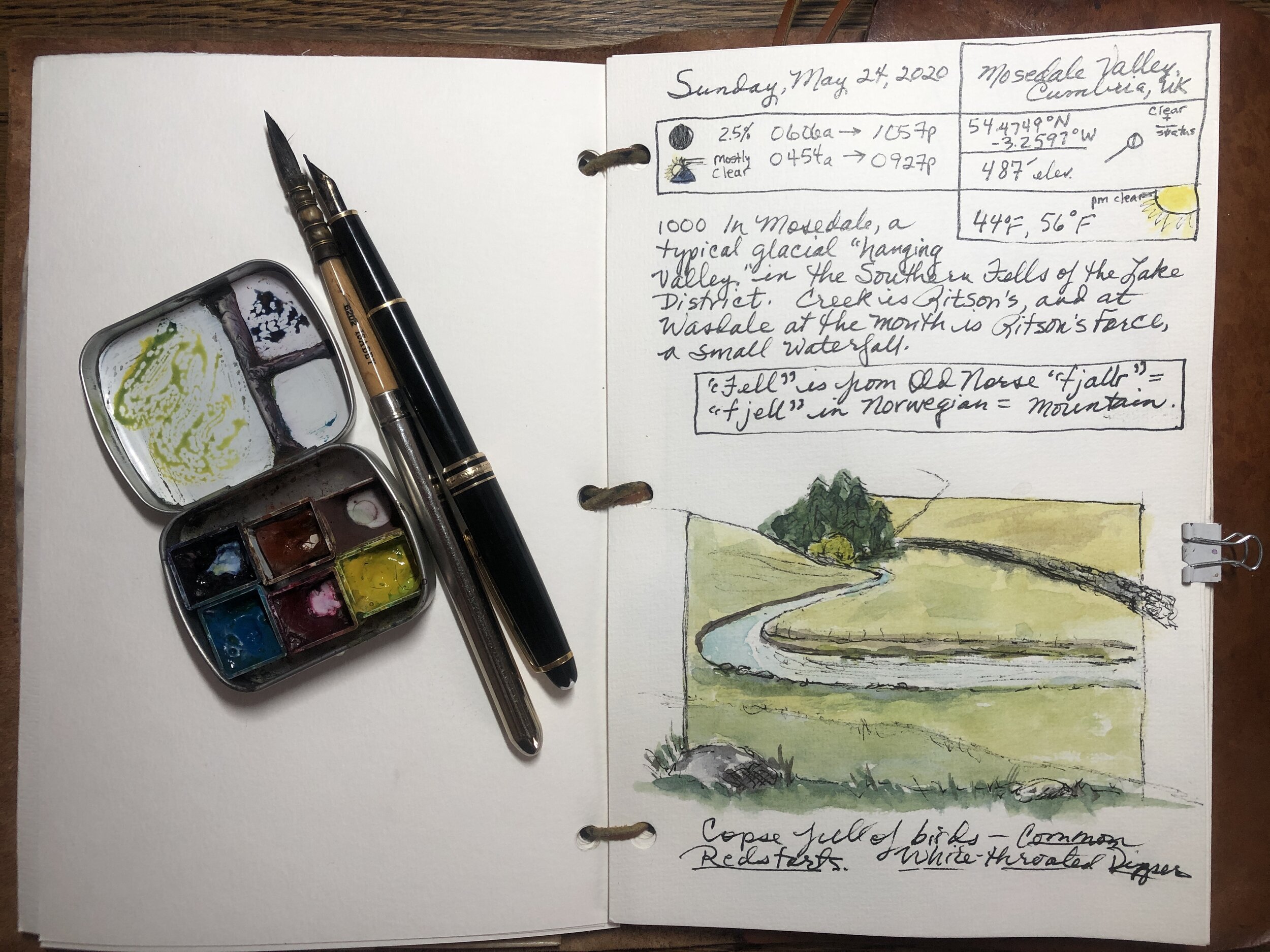
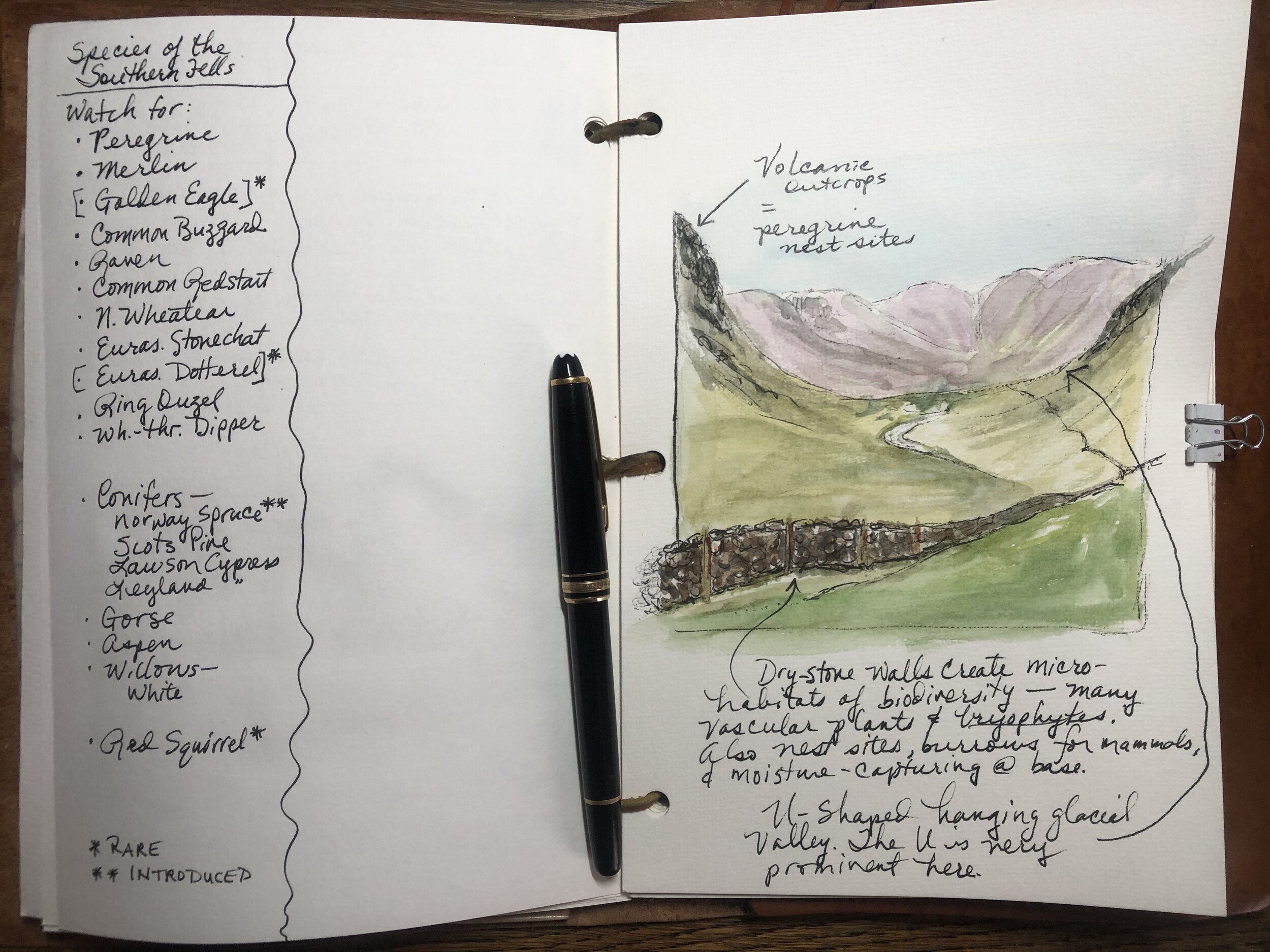
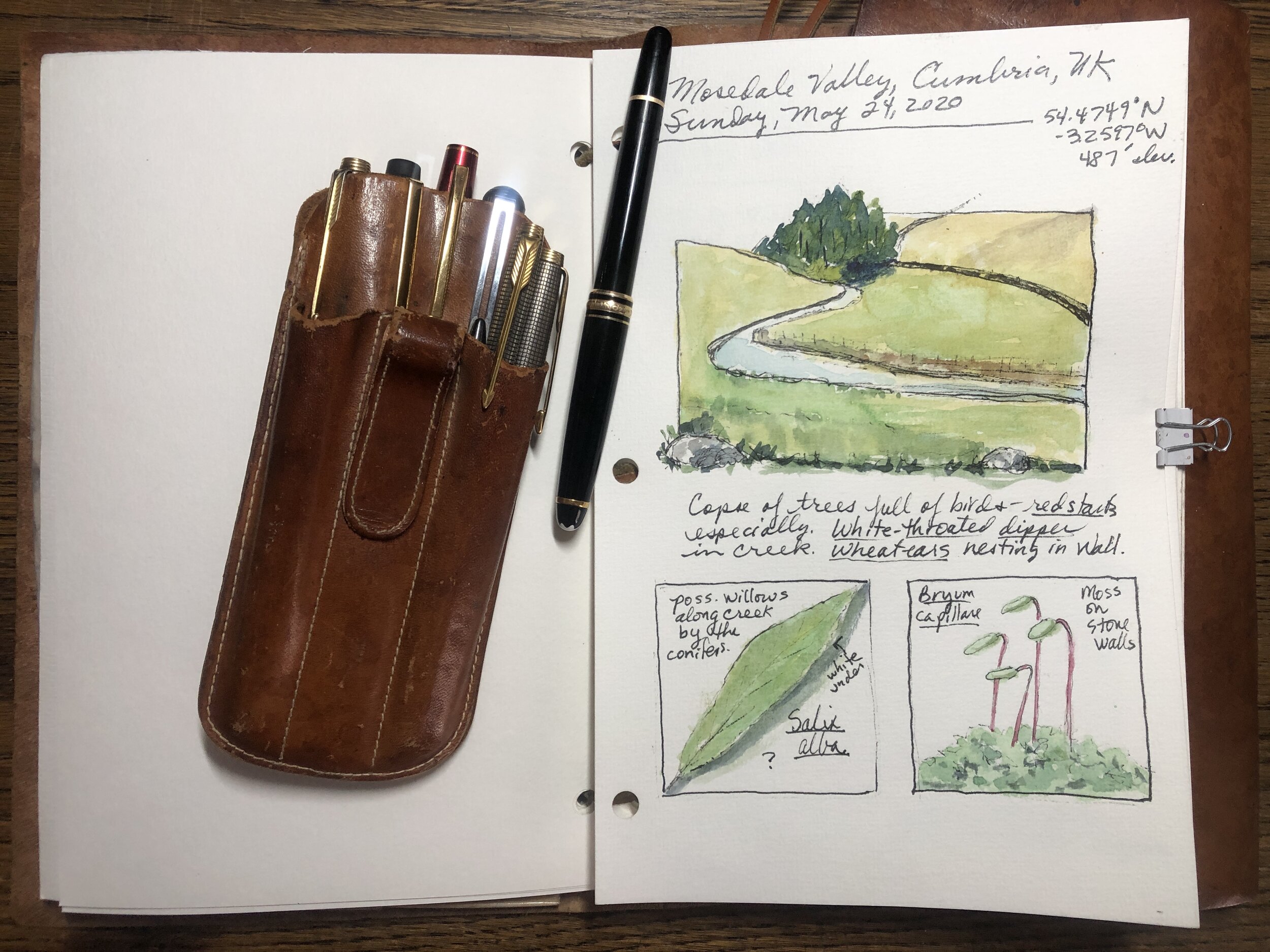
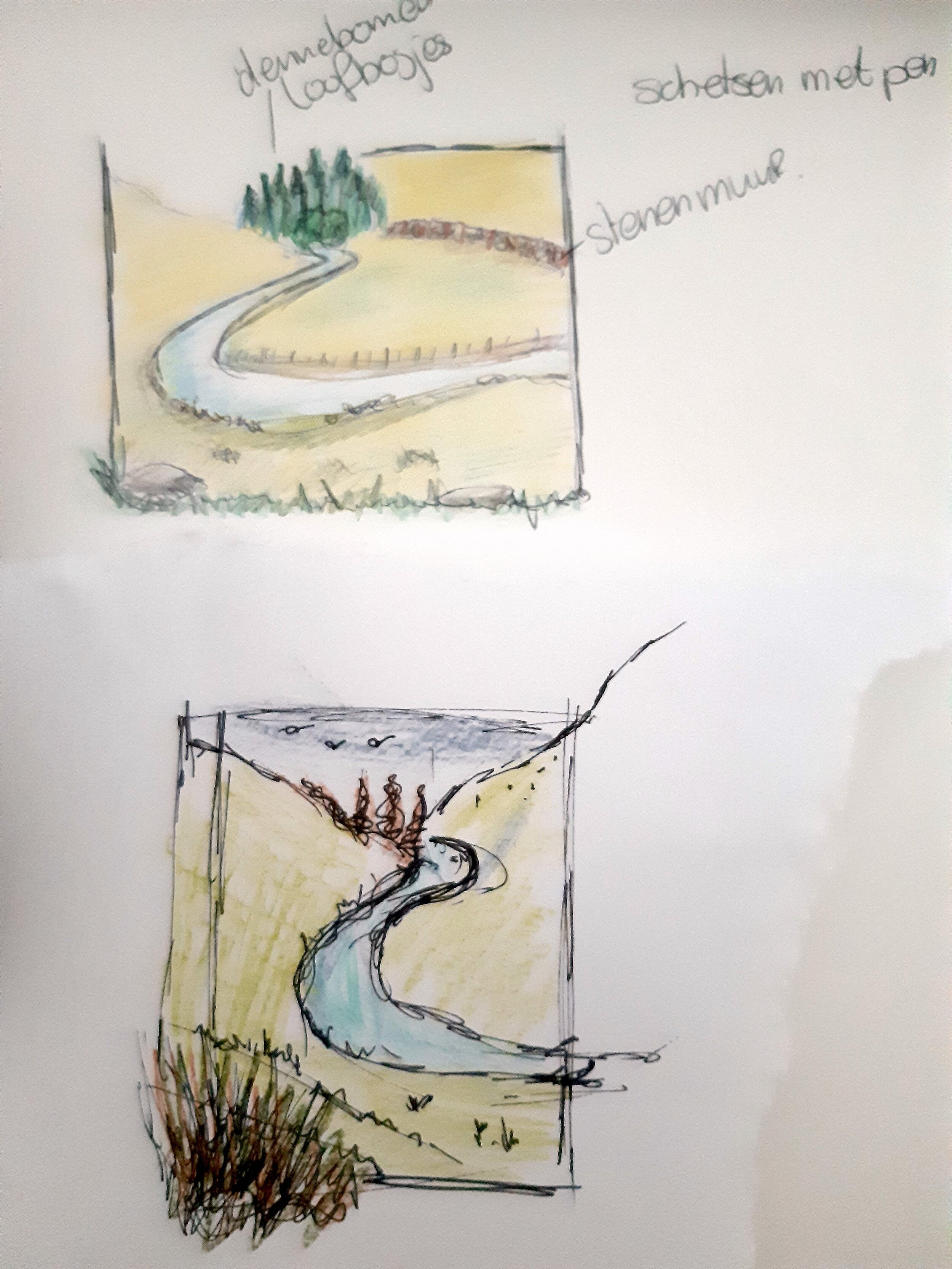
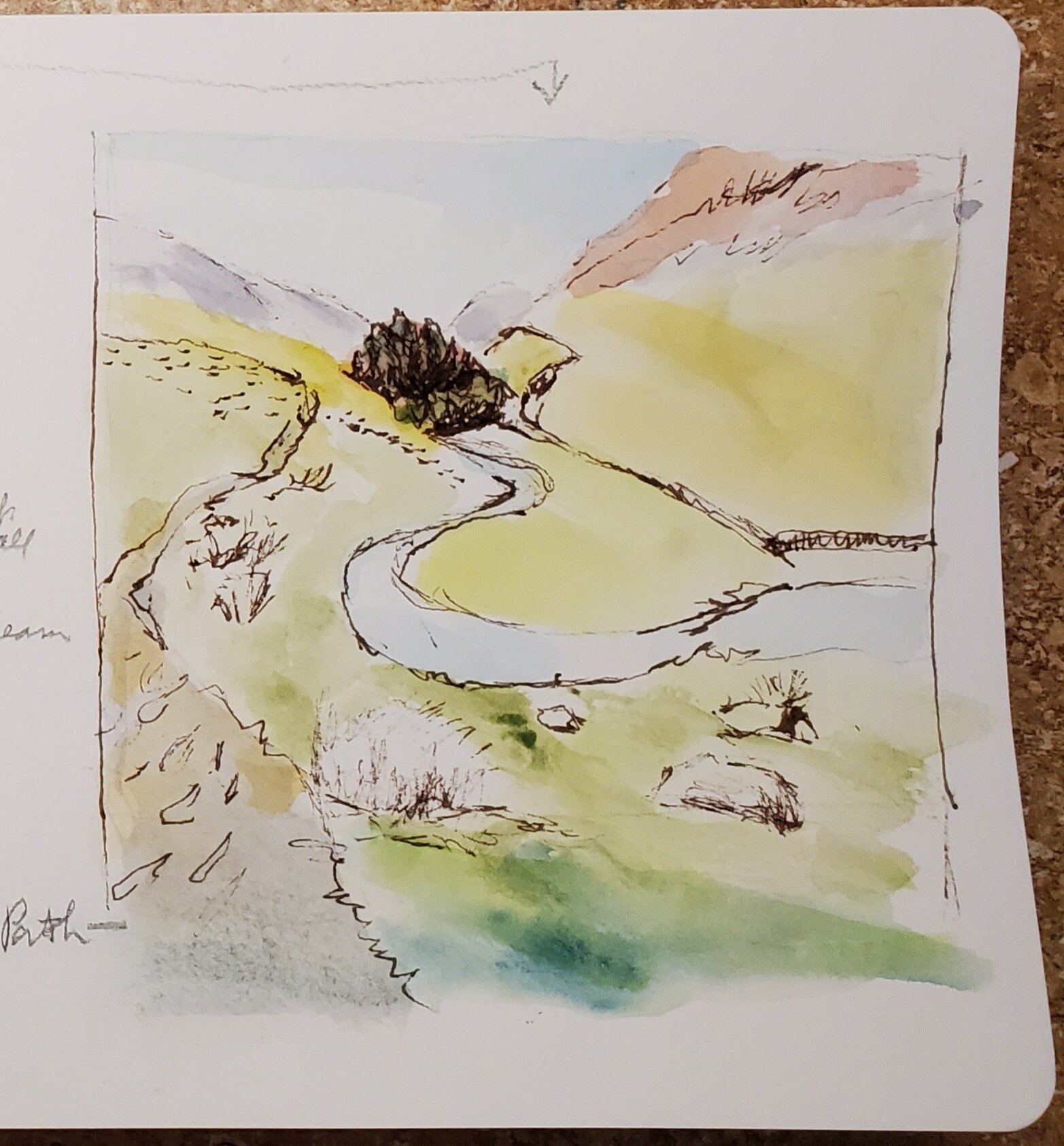
Roseann's palette in a small tin (see here):
Ryan’s palette (in ExpeditionaryArt.com’s mini paint kit):
----------------------------------------------------------
Online resources:
John Muir Laws' Nature Journal Club:
facebook.com/groups/naturejournalclub/
----------------------------------------------------------
Books:
Nature Journaling for a Wild Life by Roseann Hanson
Available at ExploringOverland.com through our Field Arts Institute:
exploringoverland.com/field-arts-shop
Laws Guide to Nature Drawing and Journaling:
----------------------------------------------------------
Follow us on IG:
@roseannhanson @desert.laboratory @ry_pett @stanfordearth
Facebook/roseannhansonexplore
#fieldarts #sketching #naturejournal #watercolor @swarovskioptik_nature #swarovskioptik_nature
Exploring New Views – with a Virtual Field Trip to Sabino Canyon
Whether you’re an old hand or a beginner at nature journaling and field sketching, learning to visualize subjects in new ways is really helpful for breaking out of ruts—plus it’s just fun. In this online workshop, we explore three unique views: side-view; top-view; and, my current favorite, zoom in / zoom out. [For those of you who took the workshop, to jump to the section where I finished the pages with watercolor and more ink line work, go to the 1:00:00 time frame in the video.]
Some tips and resources mentioned in the workshop:
Technology-assisted views:
How to use the magnifier function on your iPhone or Android
Metadata—what to include and where to find the information: on my blog
Other tutorials on visualizing landscapes in different ways: on my blog
Below are the finished pages from the workshop, demonstrating a “3D” view, a zoom-out (world) view, a cutaway view, and a zoom-in view.
I darkened the New Moon a bit more, and added more information about axial tilt during the solstice. In the 3D landscape I enhanced the ink line work a little bit, and put a blue wash (indanthrone) over the far ridge to help push it back visually.
In the cutaway view, I used pen line work to outline shrubs and enhance the grass and roots. I also added shading to the snail shell, and more written information.
Using Simple Shapes and Proportion Tips to Draw Difficult Subjects
An excerpt—in 4X time—showing Roseann Hanson's process for simplifying difficult subjects into shapes and then checking proportions using simple measuring tricks. Full workshop demo is here.
International Journaling Week - Landscapes
This video is for Day 5 of International Nature Journaling Week and officially debuted June 5, 2020 at 8 am Australia Central time — to help you prepare, here are some resources and tips:
Have your journal and a pen or pencil, and maybe some watercolors, ready to go. See below for what my color palette is for my Minimalist Paint Kit.
Before starting, do some warm-up exercises—draw 20 straight lines, 10 circles, a bunch of wavy lines. Get your hand-eye-coordination going!
We’re heading on a virtual field trip to Cochise Stronghold West in the Dragoon Mountains of Southern Arizona. Here’s some background on this interesting place (this is from a climbing website, but it has good information and photos): https://www.mountainproject.com/area/107476315/west-stronghold
----------------------------------------------------------
Online resources:
John Muir Laws' Nature Journal Club:
facebook.com/groups/naturejournalclub/
----------------------------------------------------------
Books:
Nature Journaling for a Wild Life by Roseann Hanson
Available at ExploringOverland.com through our Field Arts Institute:
exploringoverland.com/field-arts-shop
Laws Guide to Nature Drawing and Journaling:
----------------------------------------------------------
Follow us on IG:
@roseannhanson @desert.laboratory @ry_pett @stanfordearth
Facebook/roseannhansonexplore
Quickly Capture (and add color to) Complex Subjects
Zoom workshop-demonstration on field sketching and nature journaling by Roseann Hanson (University of Arizona Desert Laboratory on Tumamoc Hill / ExploringOverland.com Field Arts Institute) and Ryan Petterson (Stanford University School of Earth Energy and Environmental Sciences).
Roseann and Ryan are both field scientists and naturalists, and keep field journals / nature journals with notes and sketches in pen, pencil, and watercolor.
----------------------------------------------------------
RESOURCES FOR THE WORKSHOP:
Ryan's Resources:
Tuolumne Meadows Virtual Tour Online (Ryan worked with site #36 and 47):
vrglaciers.wp.worc.ac.uk/tuolumne/tuolumne.html
Tuolumne Meadows screen shot for Ryan's landscape sketching demo:
dropbox.com/s/z9qjqolk09obgq2/Tuolumne%20Meadows%20demo%20sample.png?dl=0
----------------------------------------------------------
Roseann's Handouts:
dropbox.com/s/auslrgm69g6l6cn/MINIMALIST%20PAINTING.png?dl=0
dropbox.com/s/kt63w6gwq3ku06g/KEEP%20IT%20SIMPLE.png?dl=0
dropbox.com/s/3bohojulags4cqv/Workshop%20-%20Online%20-%20May%202020.pdf?dl=0
----------------------------------------------------------
Online resources:
John Muir Laws' Nature Journal Club:
facebook.com/groups/naturejournalclub/
----------------------------------------------------------
Books:
Nature Journaling for a Wild Life by Roseann Hanson
Available at ExploringOverland.com through our Field Arts Institute:
exploringoverland.com/field-arts-intro
Laws Guide to Nature Drawing and Journaling:
----------------------------------------------------------
Follow us on IG:
@roseannhanson @desert.laboratory @ry_pett @stanfordearth
Facebook/roseannhansonexplore
#fieldarts #sketching #naturejournal #watercolor @swarovskioptik_nature #swarovskioptik_nature
Nature Journal Page Flow
Just starting out nature journaling? Here is a short tutorial on how I begin a nature journal page using metadata (the “data that goes with data” to give it relevance by grounding it in time / place / weather) and then use a prose entry to get into the “flow” before adding a quick sketch.
Here’s an example of a couple of pages from a day in the Okavango Delta, in Botswana. You can see my grid, the way I do the weather and location and moon / sun, then start out with a narrative prose to get warmed up. I add question marks, circled, for things I want to look up later or research more thoroughly (like why do zebras flap their lips!?). The sketching need not be “perfect”—notice I used boxy stick-like figures to approximate the impala’s gait (I call this “drawing like a paleo-journaler” in my book). Keeping lists for nature data is also important, so I almost always do a bird or “wildlife” list on one side and add to it through the day. Drawing boxes is also a great way to add interest and break up prose on a page. You don’t even have to fill them first—just draw one, and write around it, wait til something sparks your interest.
Minimalist Watercolor for Nature Journaling
If you are new to watercoloring in your nature journal or field notes—or to using a waterbrush instead of a traditional brush—here is a short tutorial on using a minimalist approach, using just five colors (a cyan-magenta-yellow triad + burnt sienna and a dark blue) from my Minimalist Paint Kit. My workbook, Nature Journaling for a Wild Life, includes a section on how to start using simple colors and which ones are easiest to use and why. I use transparent, non-staining ("liftable") colors from Daniel Smith: Cerulean or Manganese Blue Hue (="cyan"), Quinacridone Rose (="magenta”), and Aureolin (="yellow”) plus Burnt Sienna and Indanthrone Blue.
Below is a link for a downloadable PDF of my Minimalist Watercolor Worksheets.
Triad + 2 color Minimalist Watercolor Technique – Printable color mixing practice sheets
Click HERE to download a PDF. Tip: if you have 8 1/2 x 11 watercolor paper that is 90-lb or lighter, you can print on a laser printer (not an inkjet, which will smear).
Fellow teachers: If you use my PDF in a class, please make sure to include the attribution for my work; I created these resources for my book and for my classes, and I appreciate the attribution!


